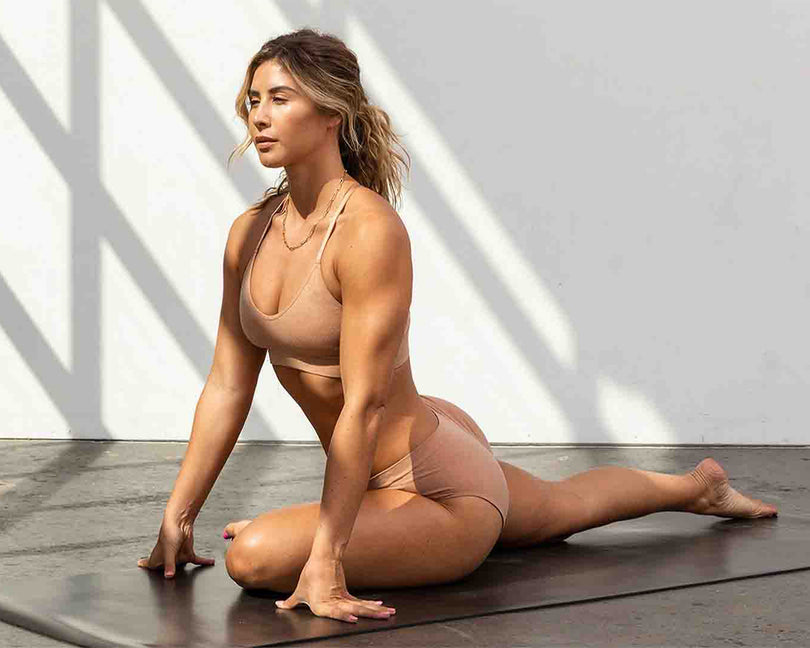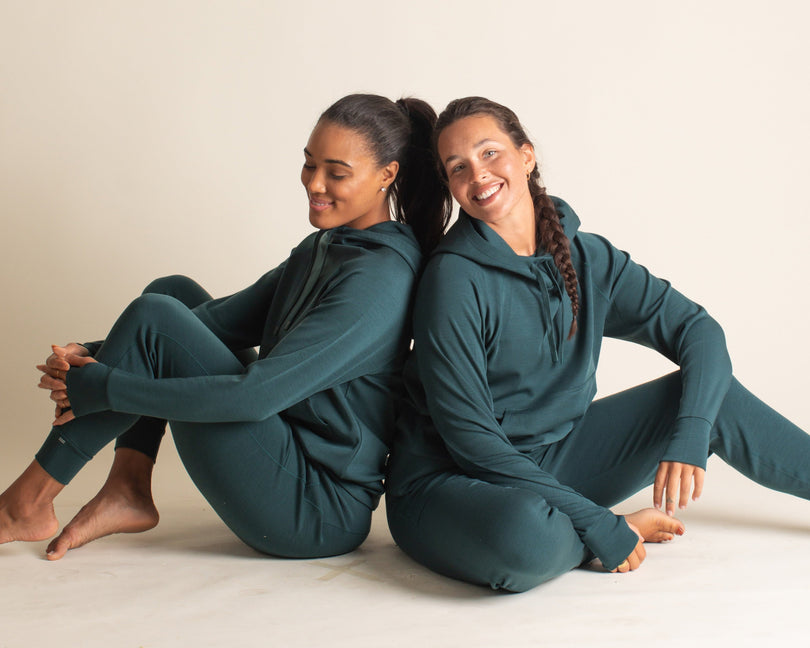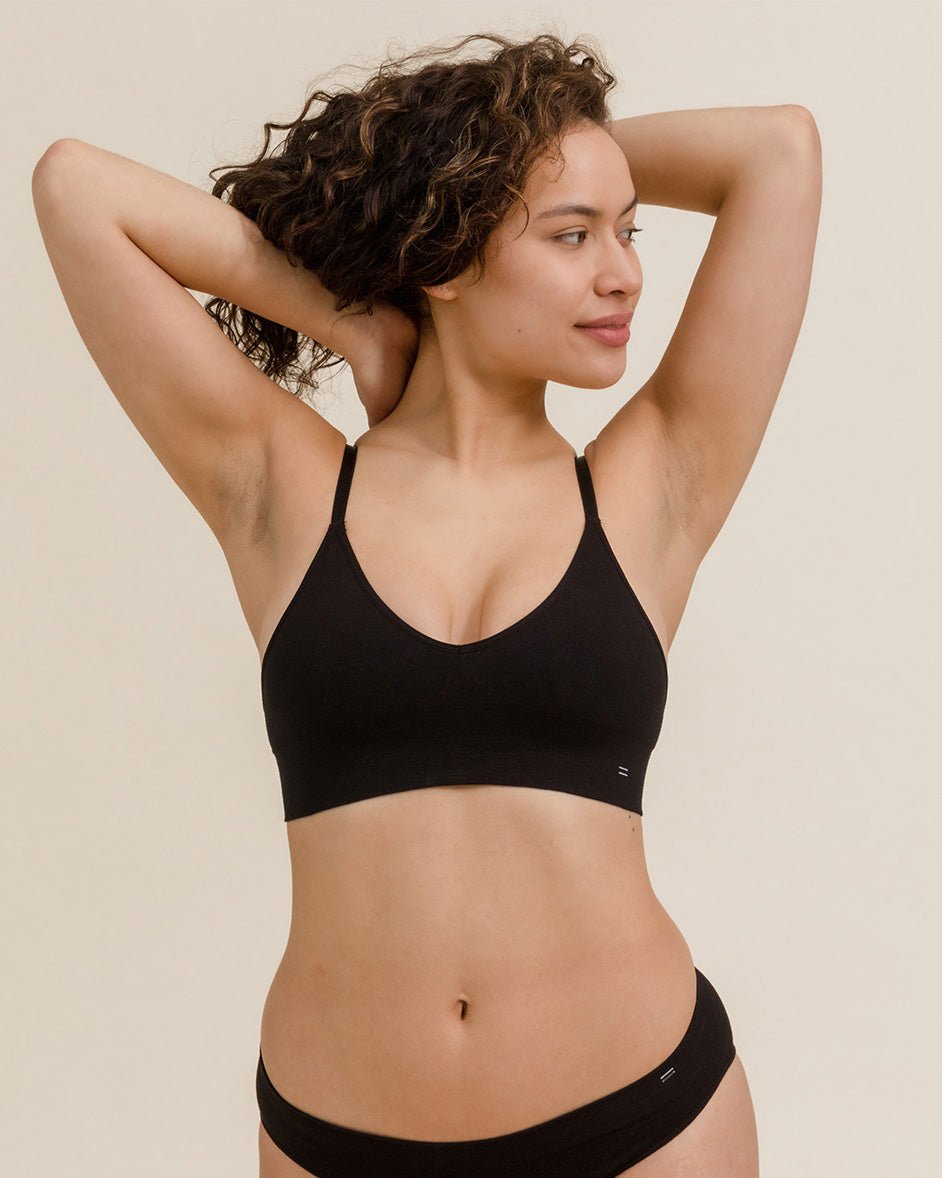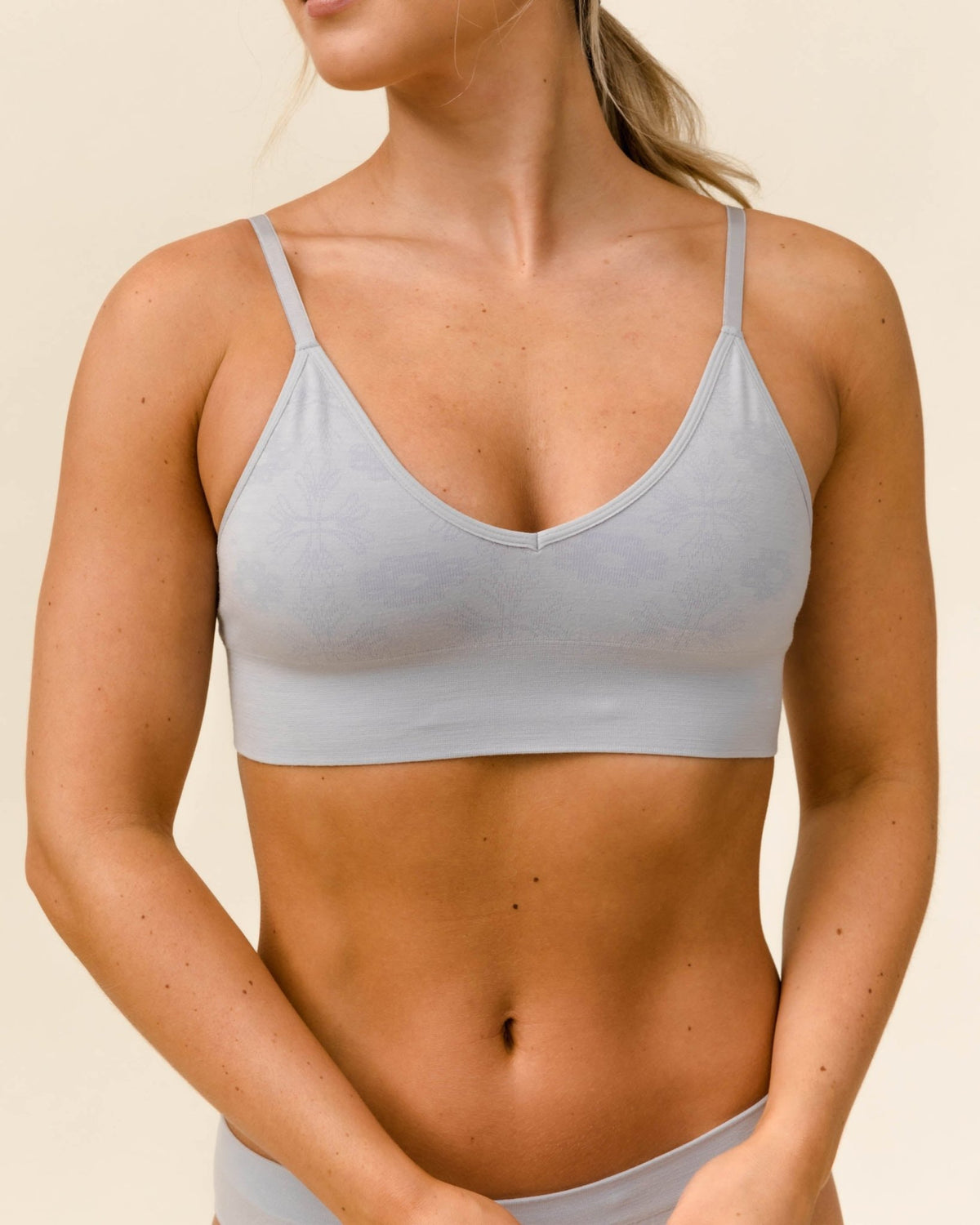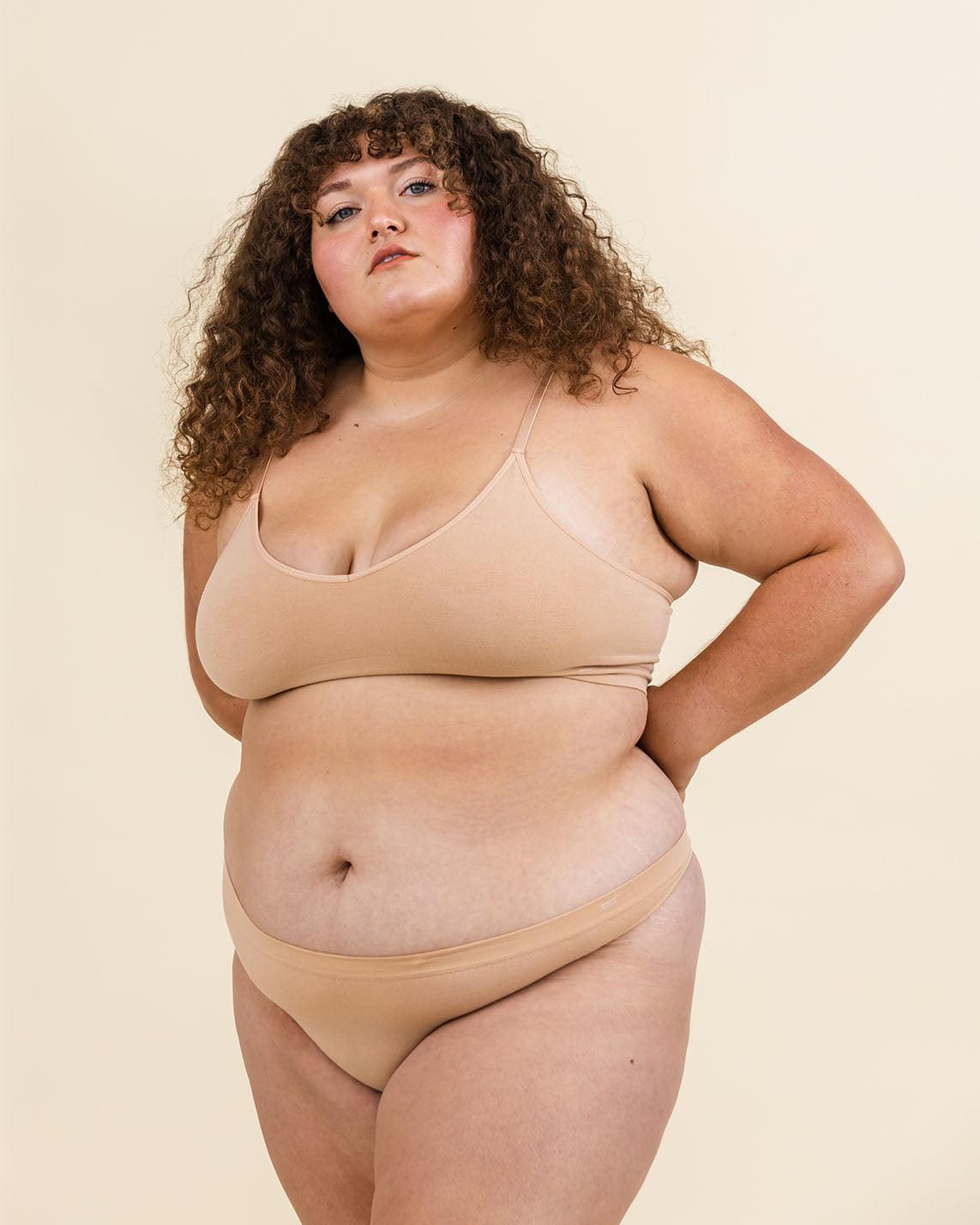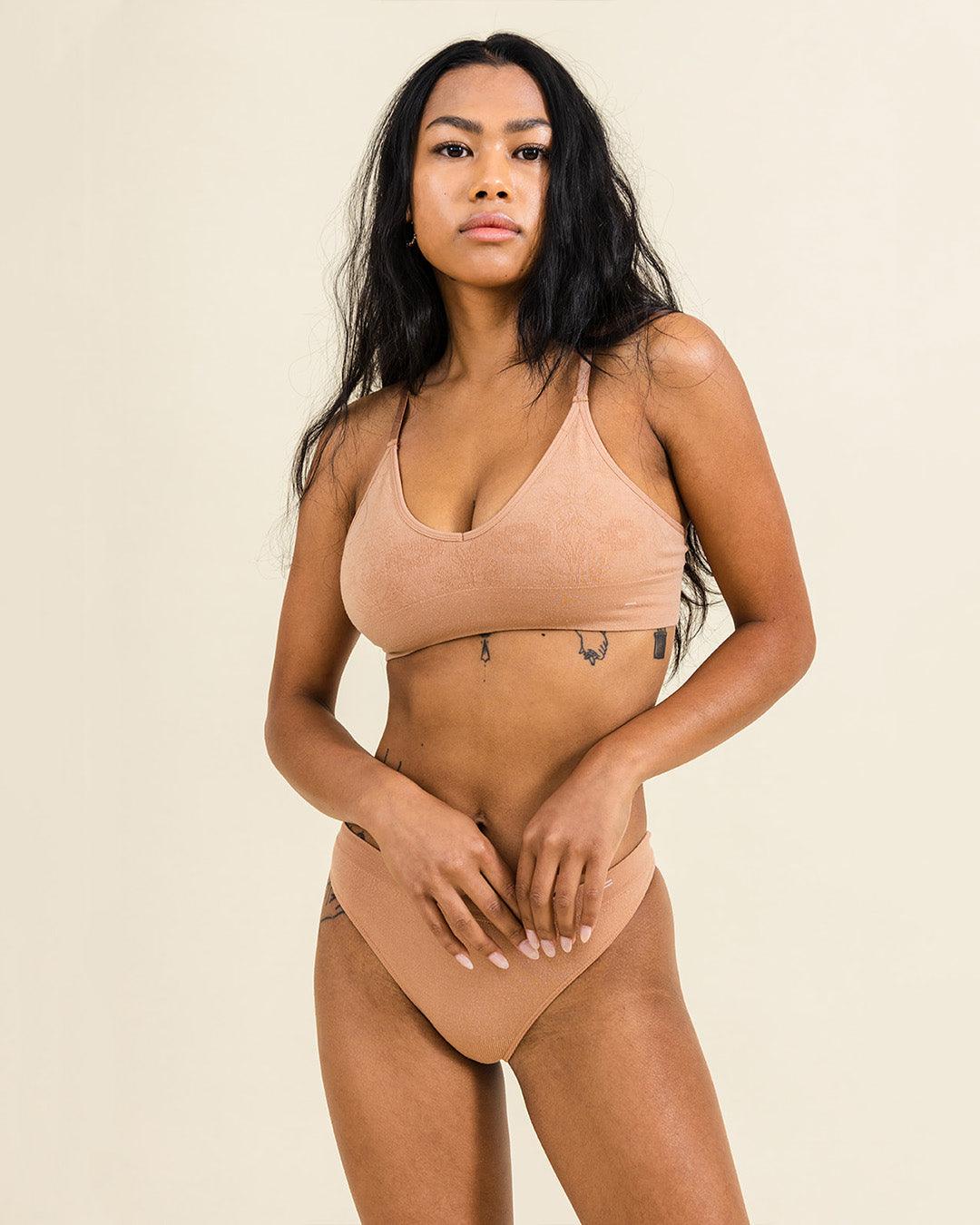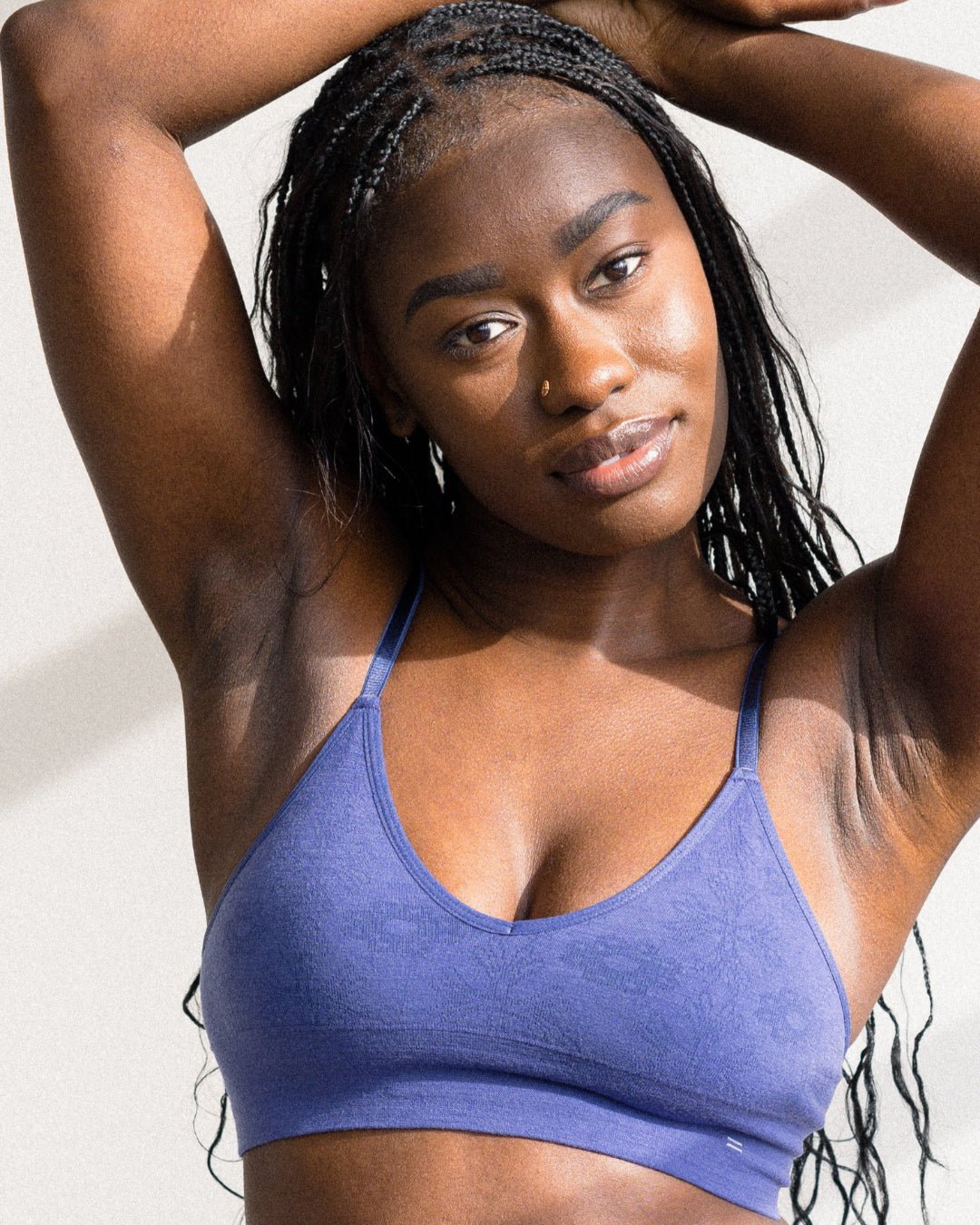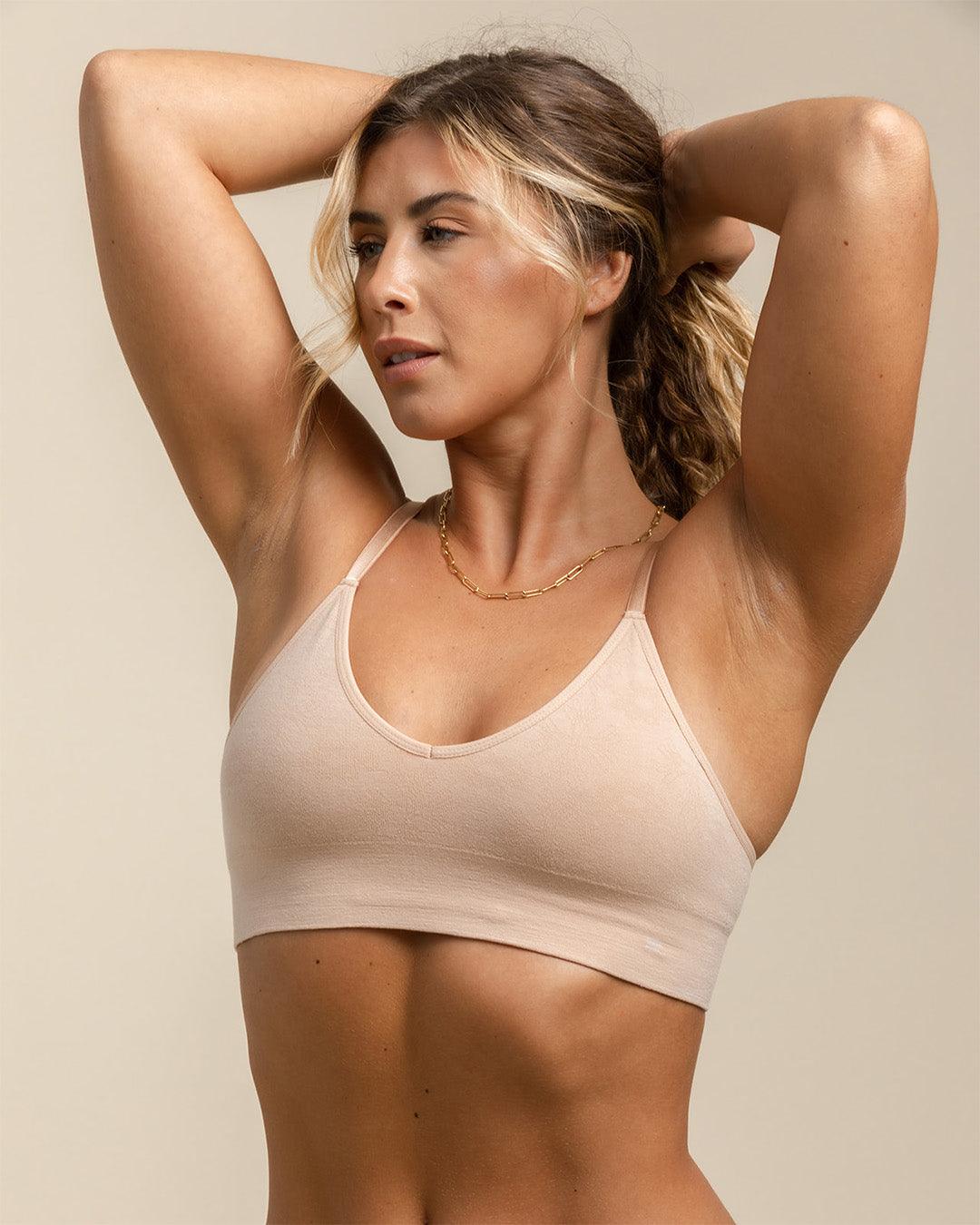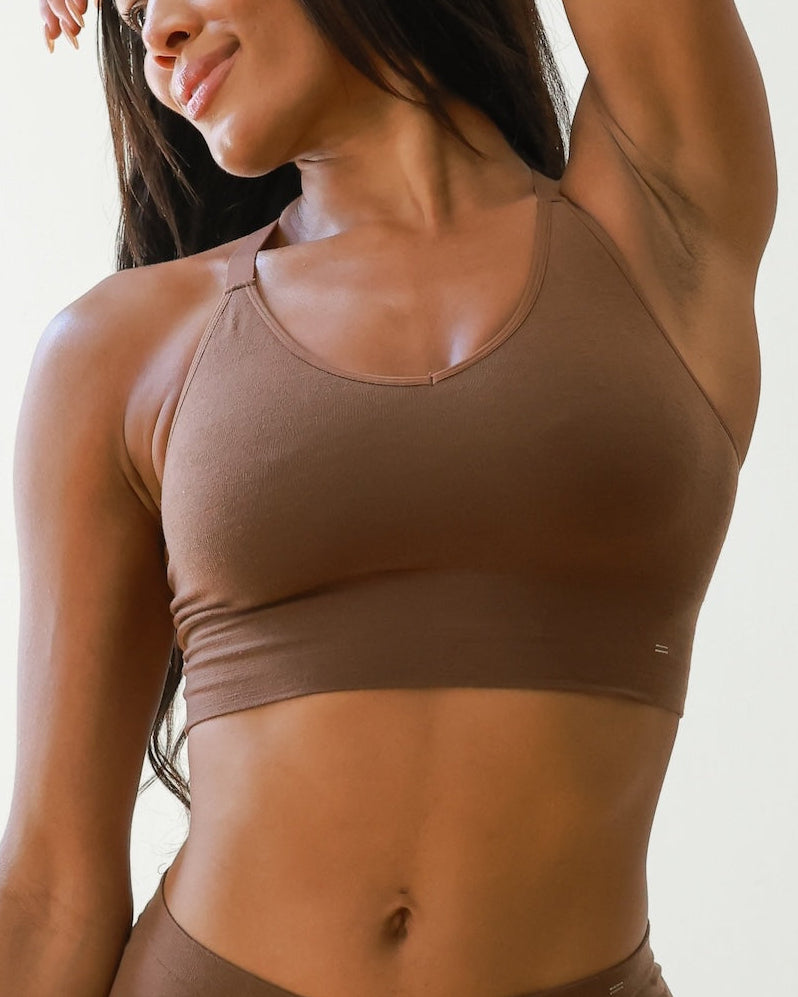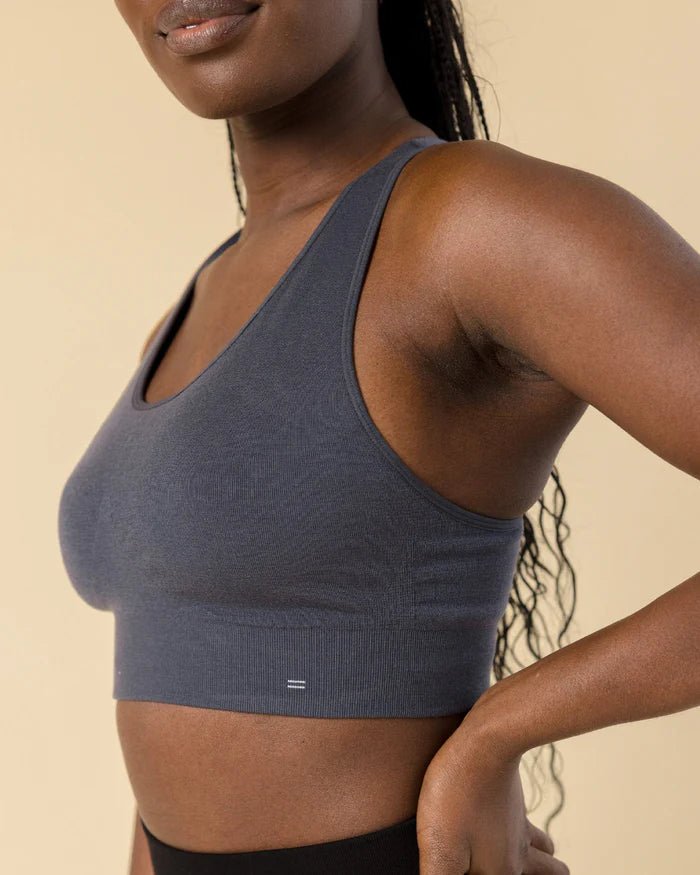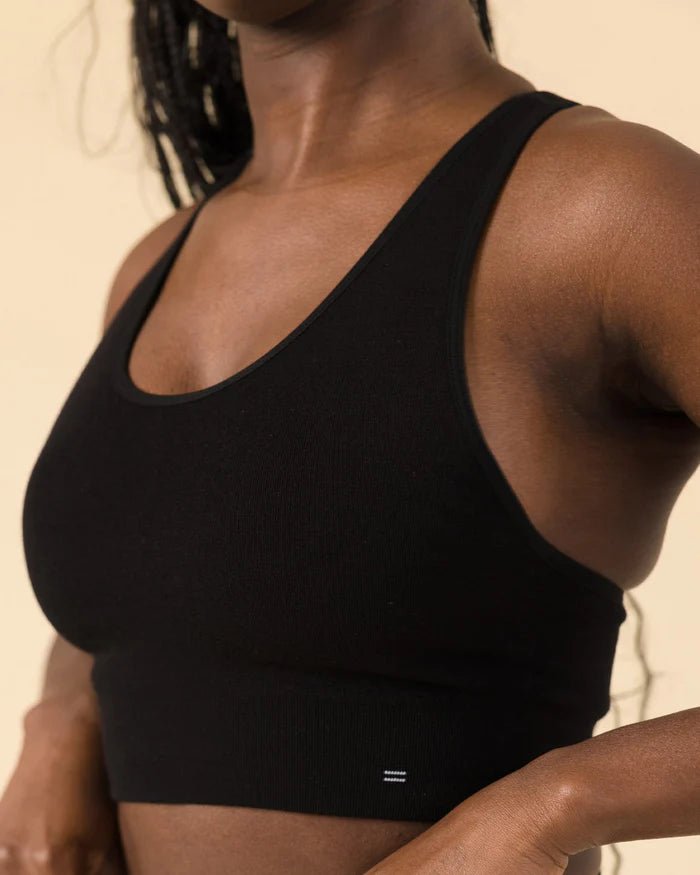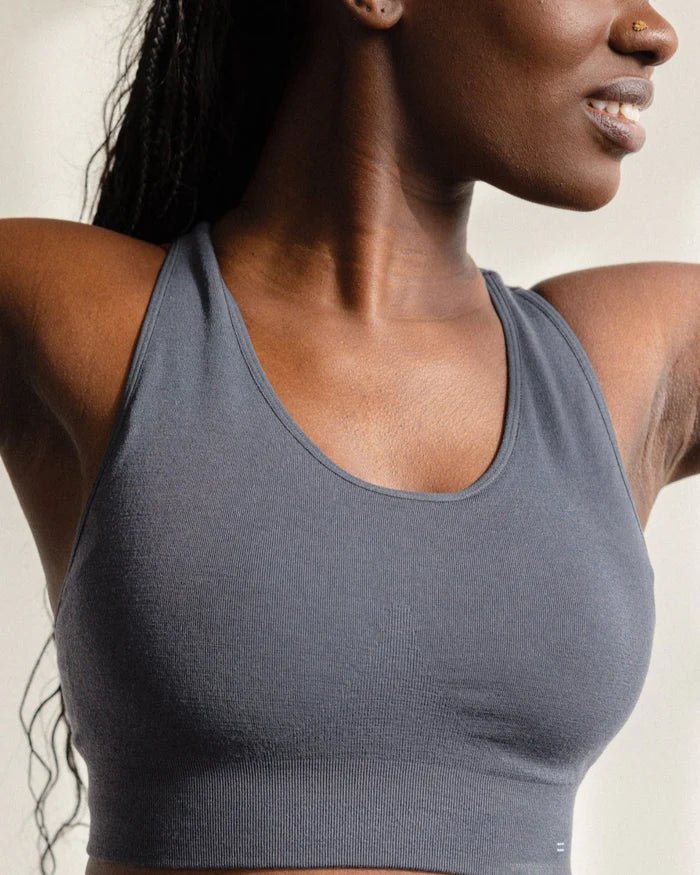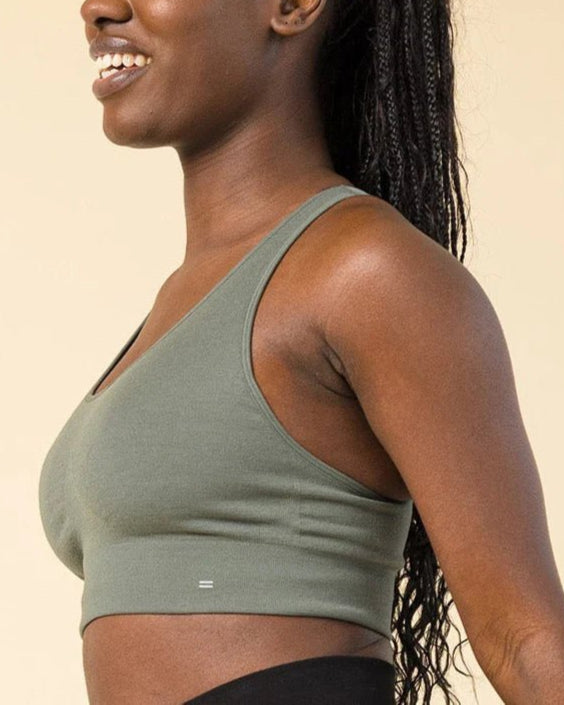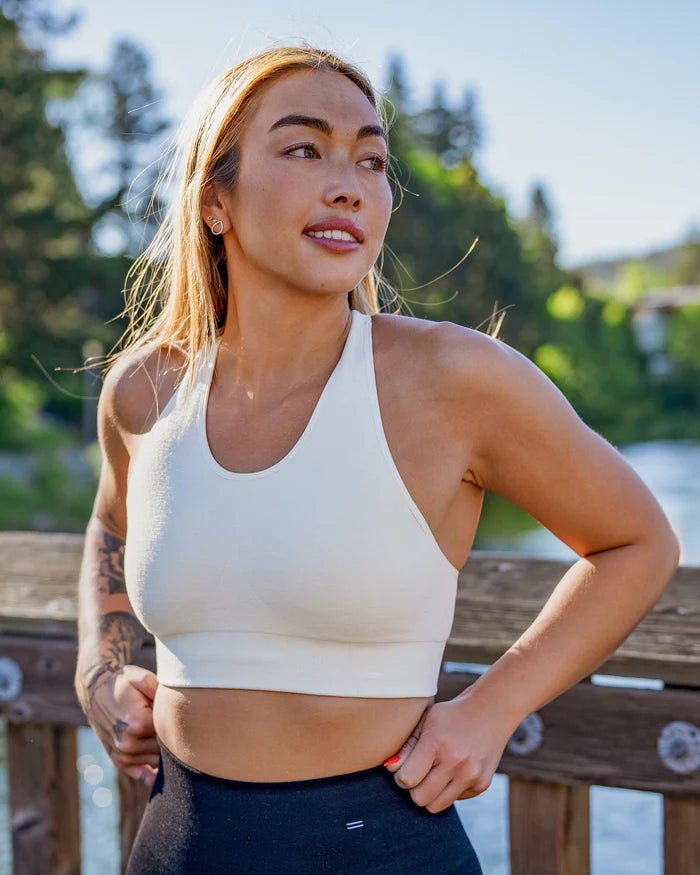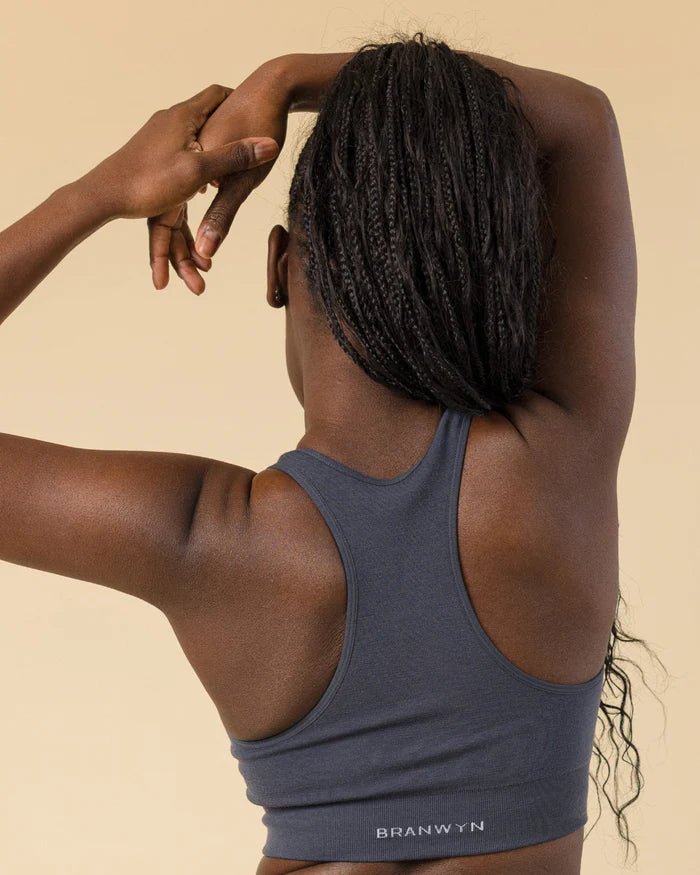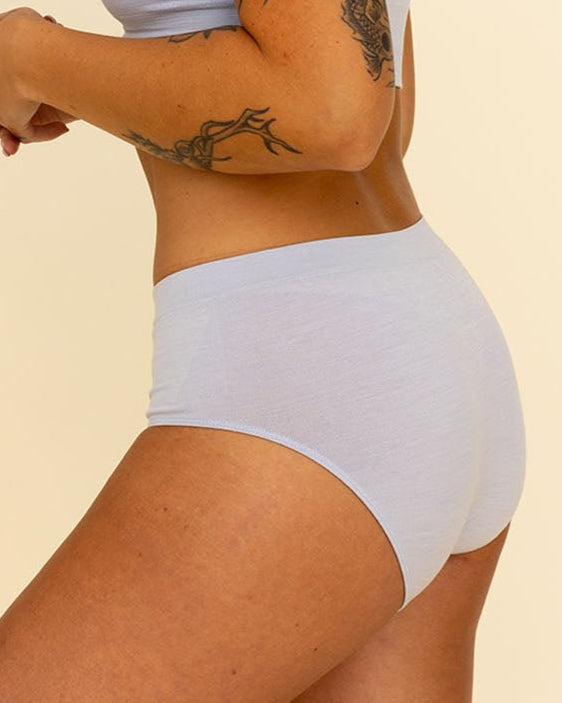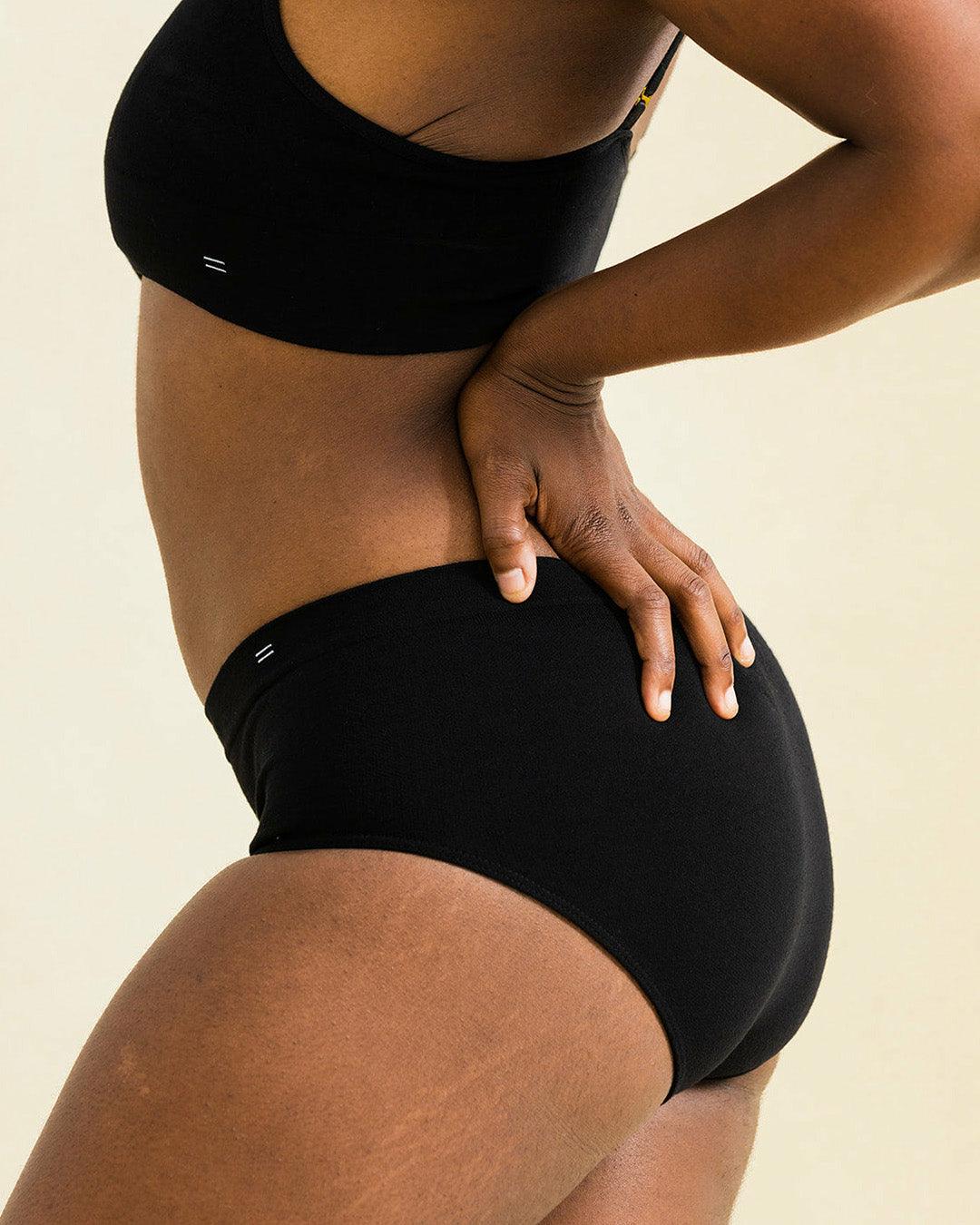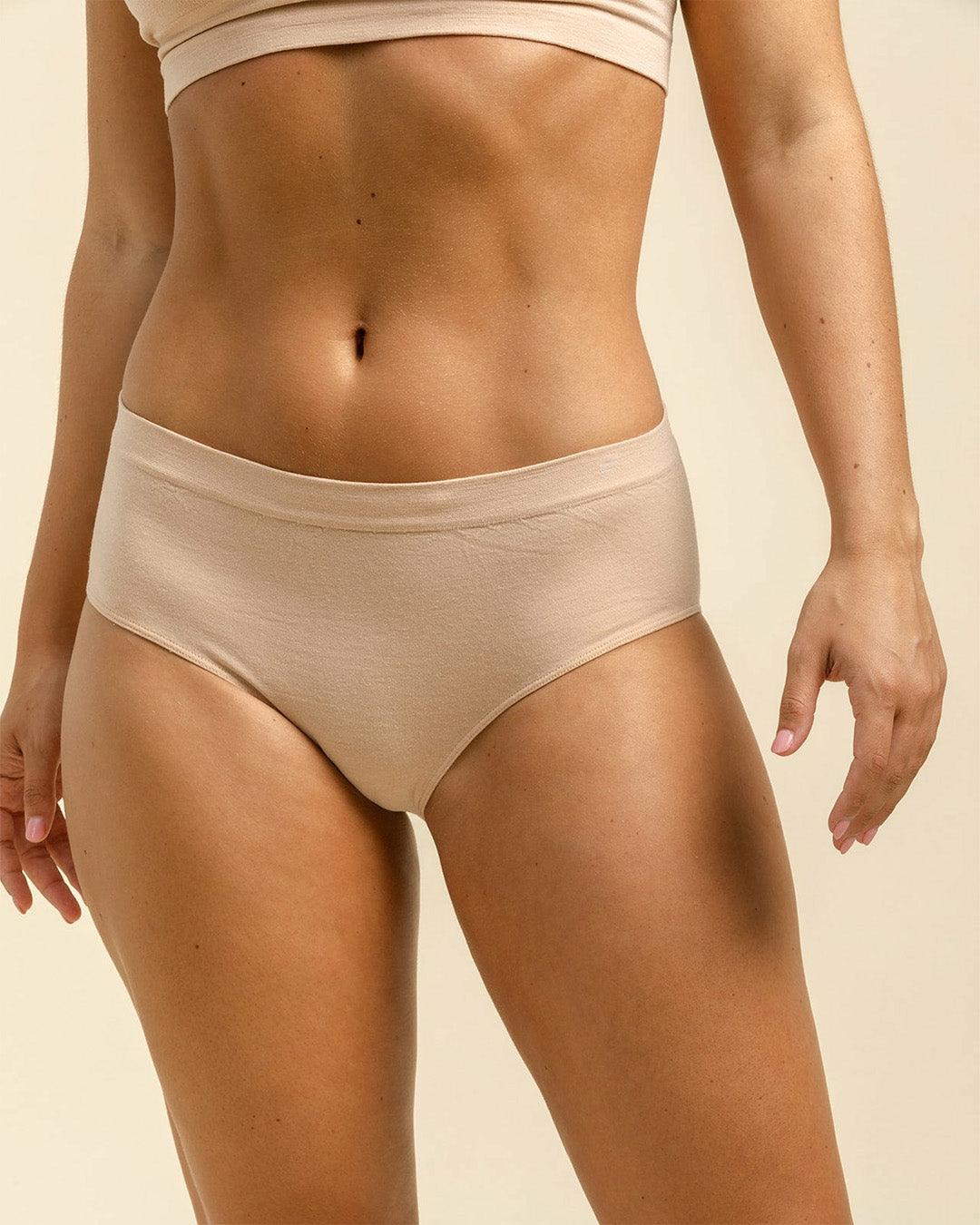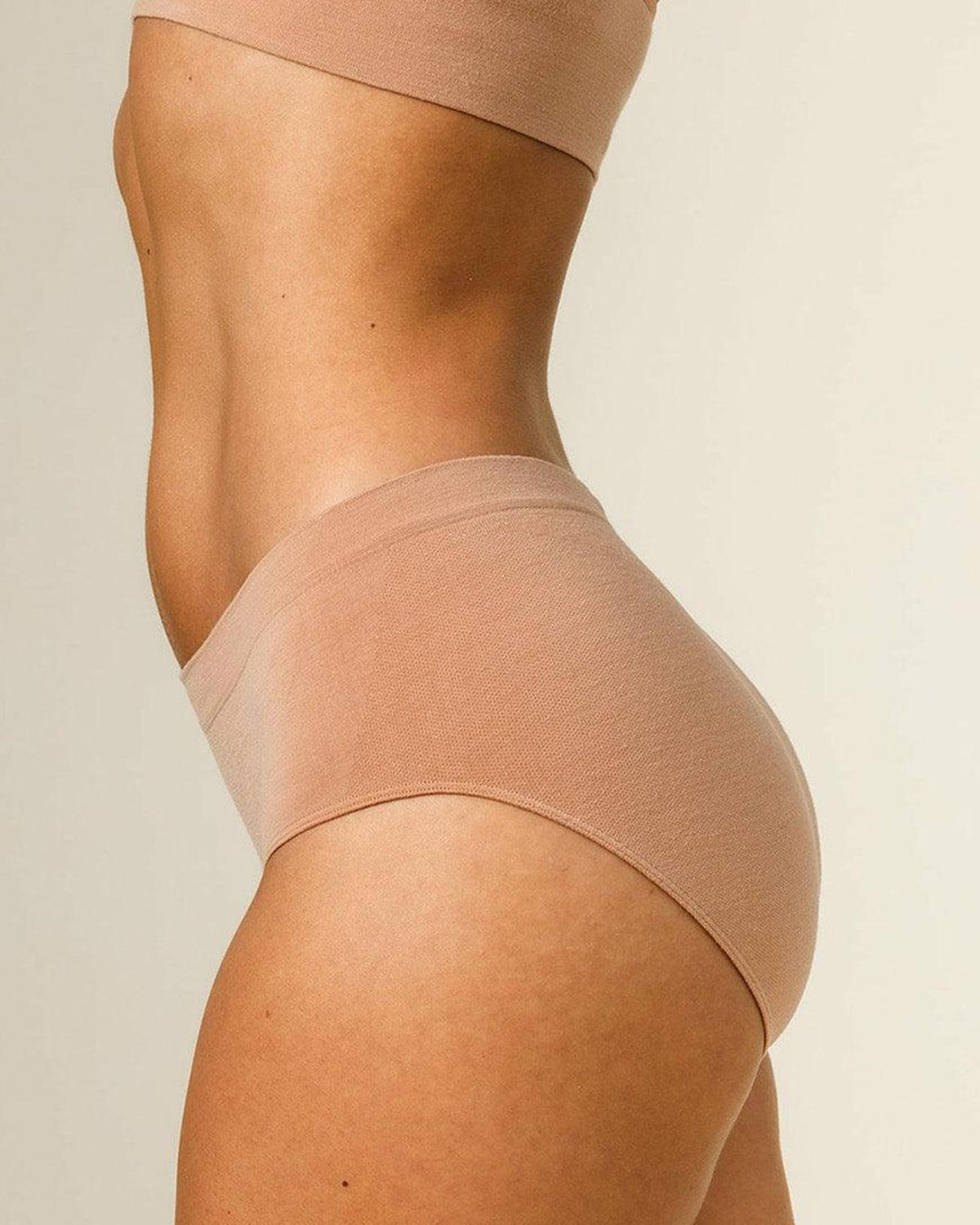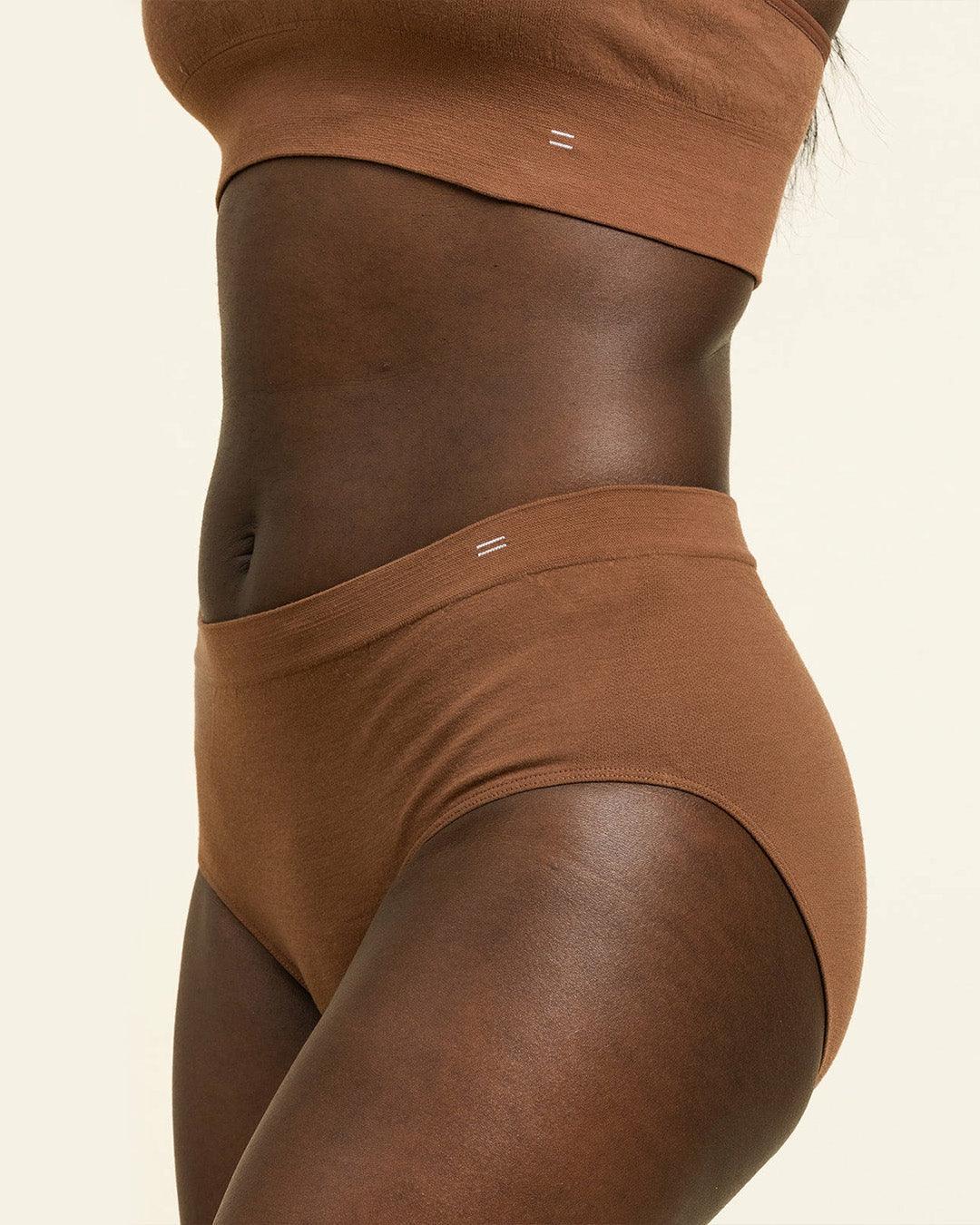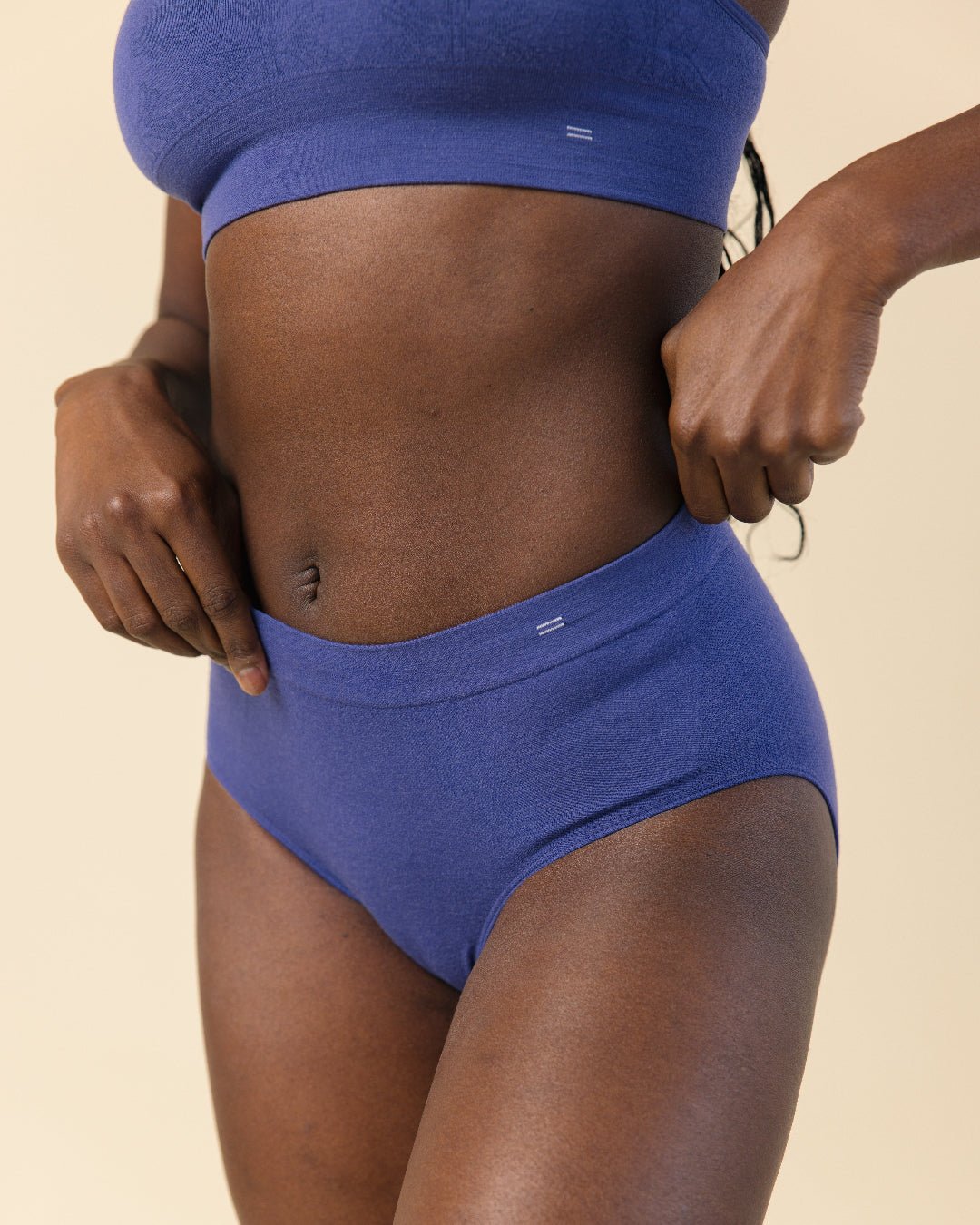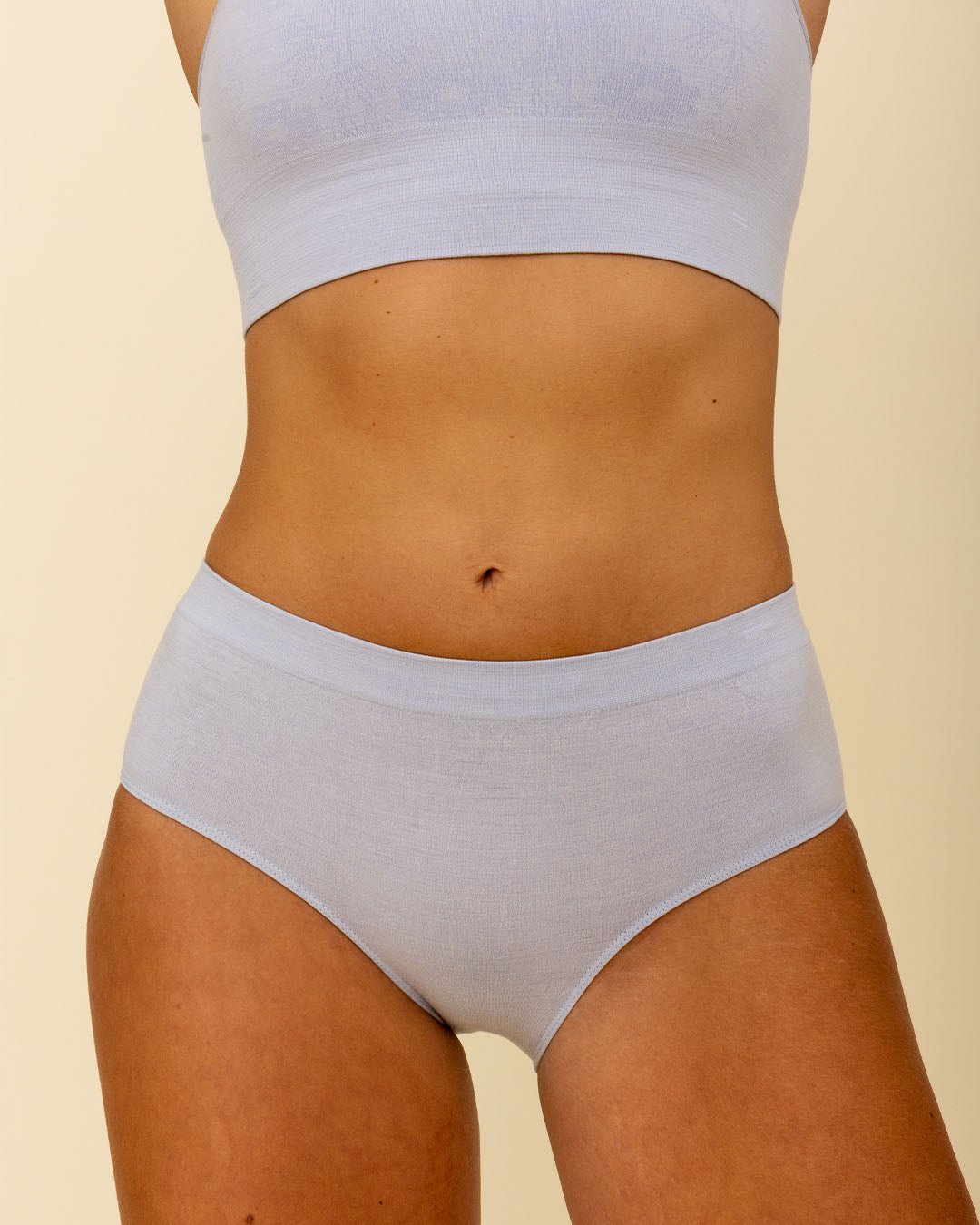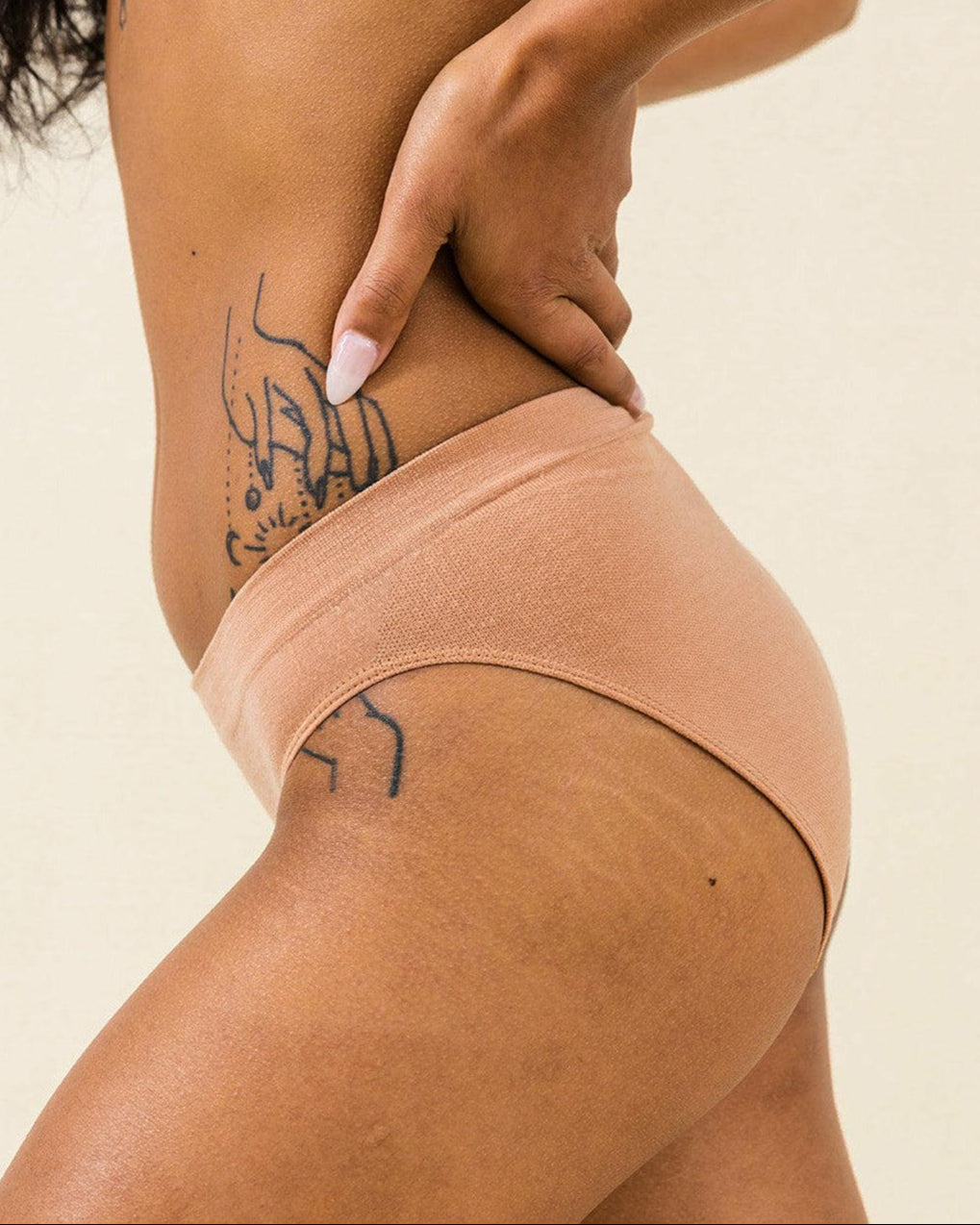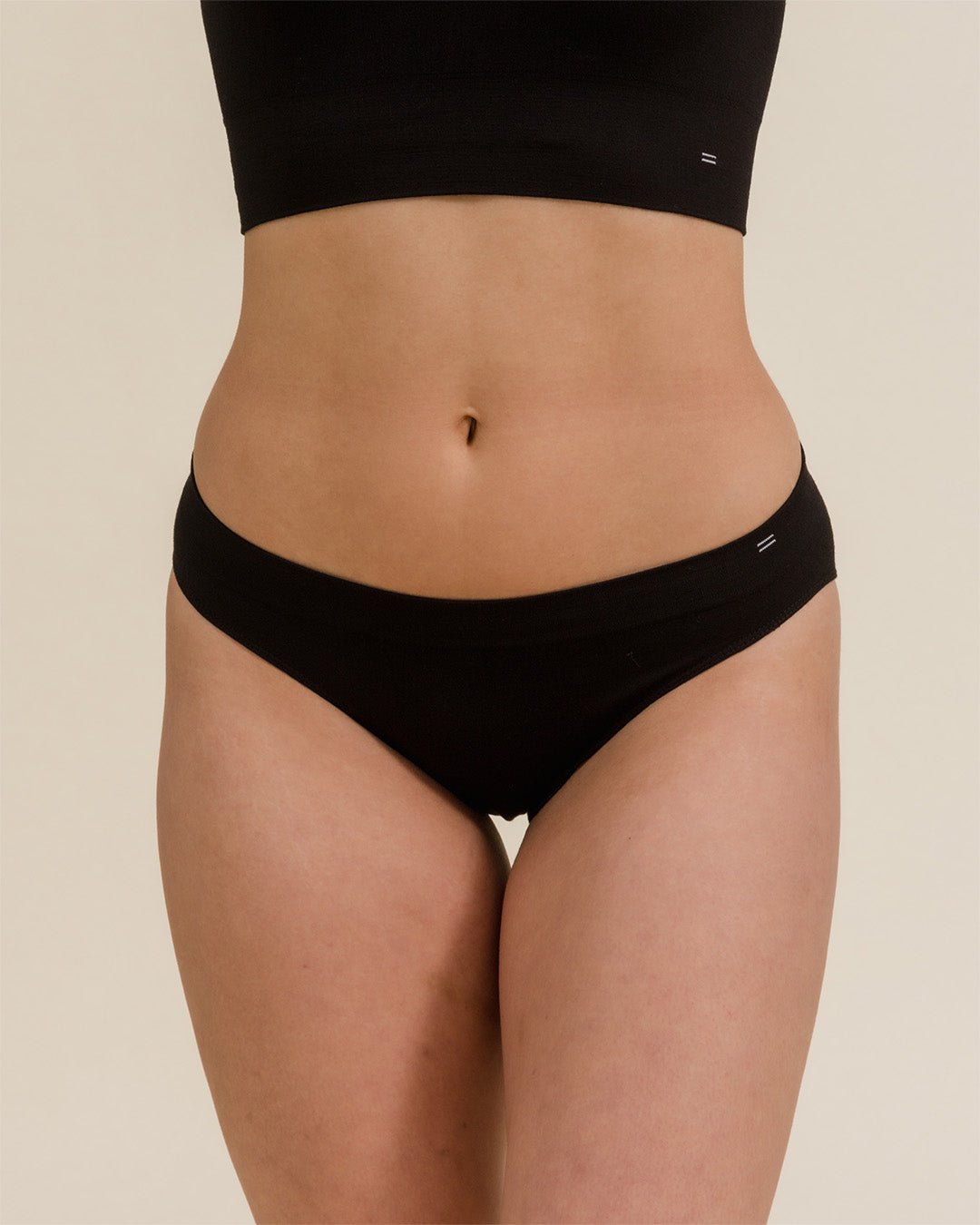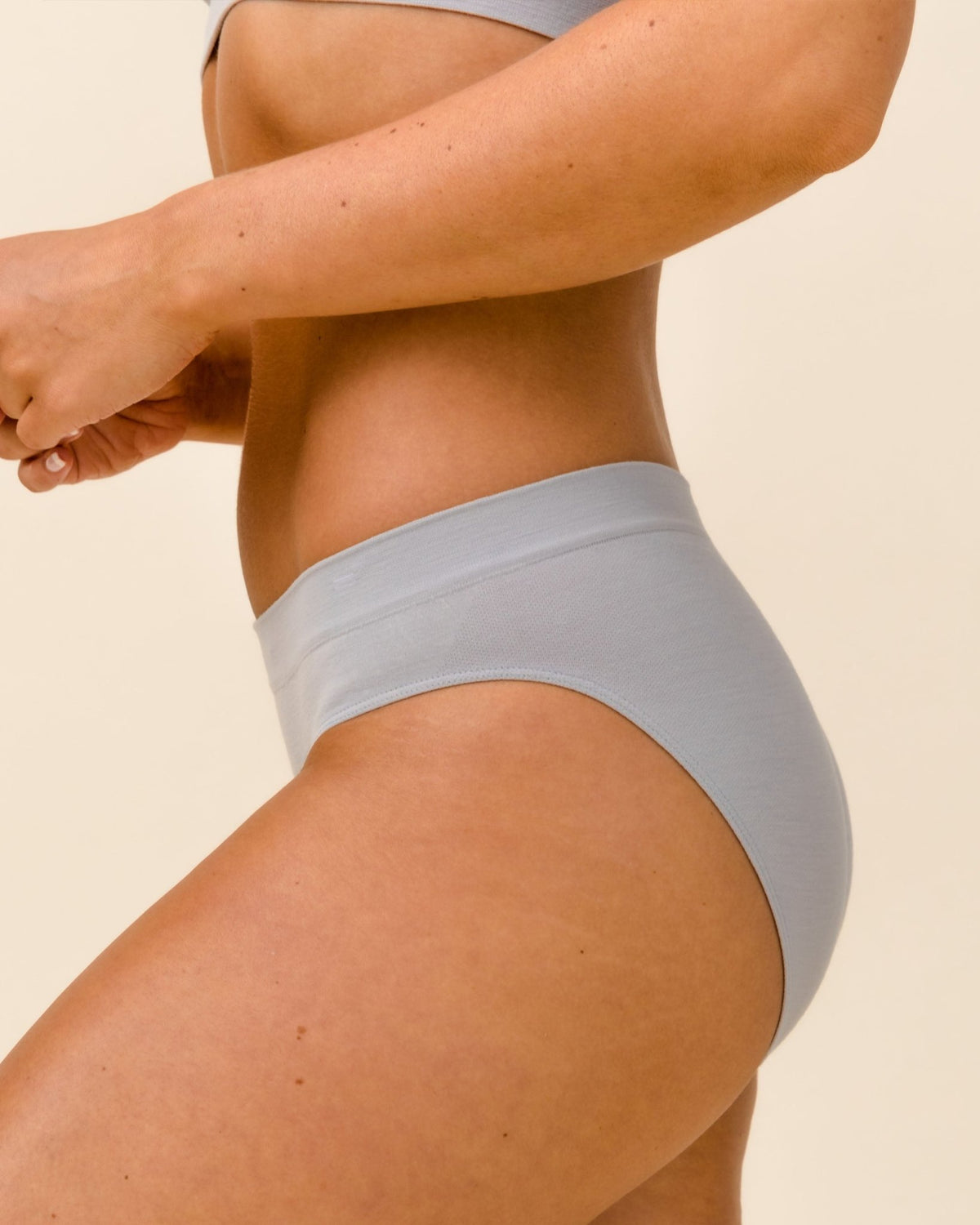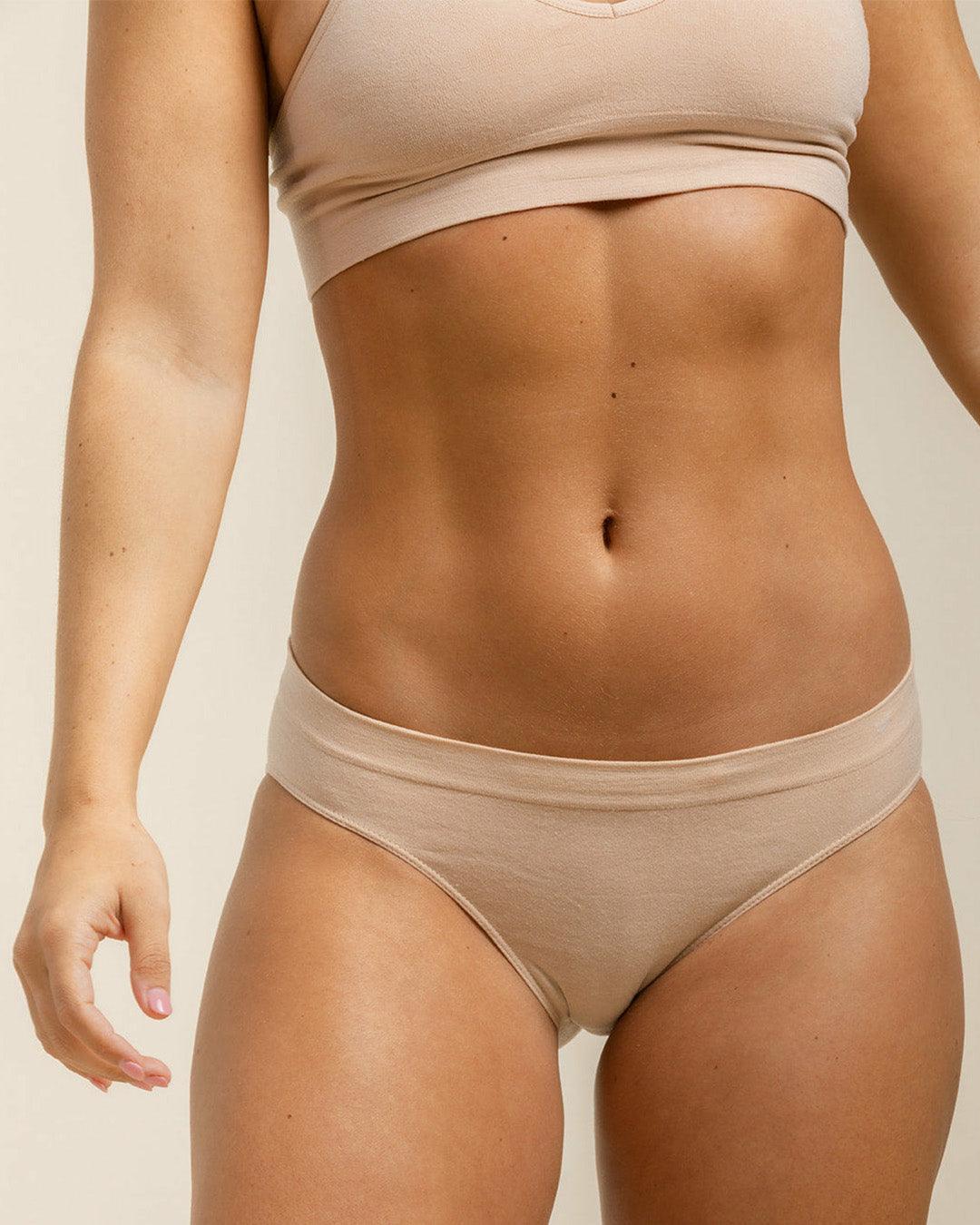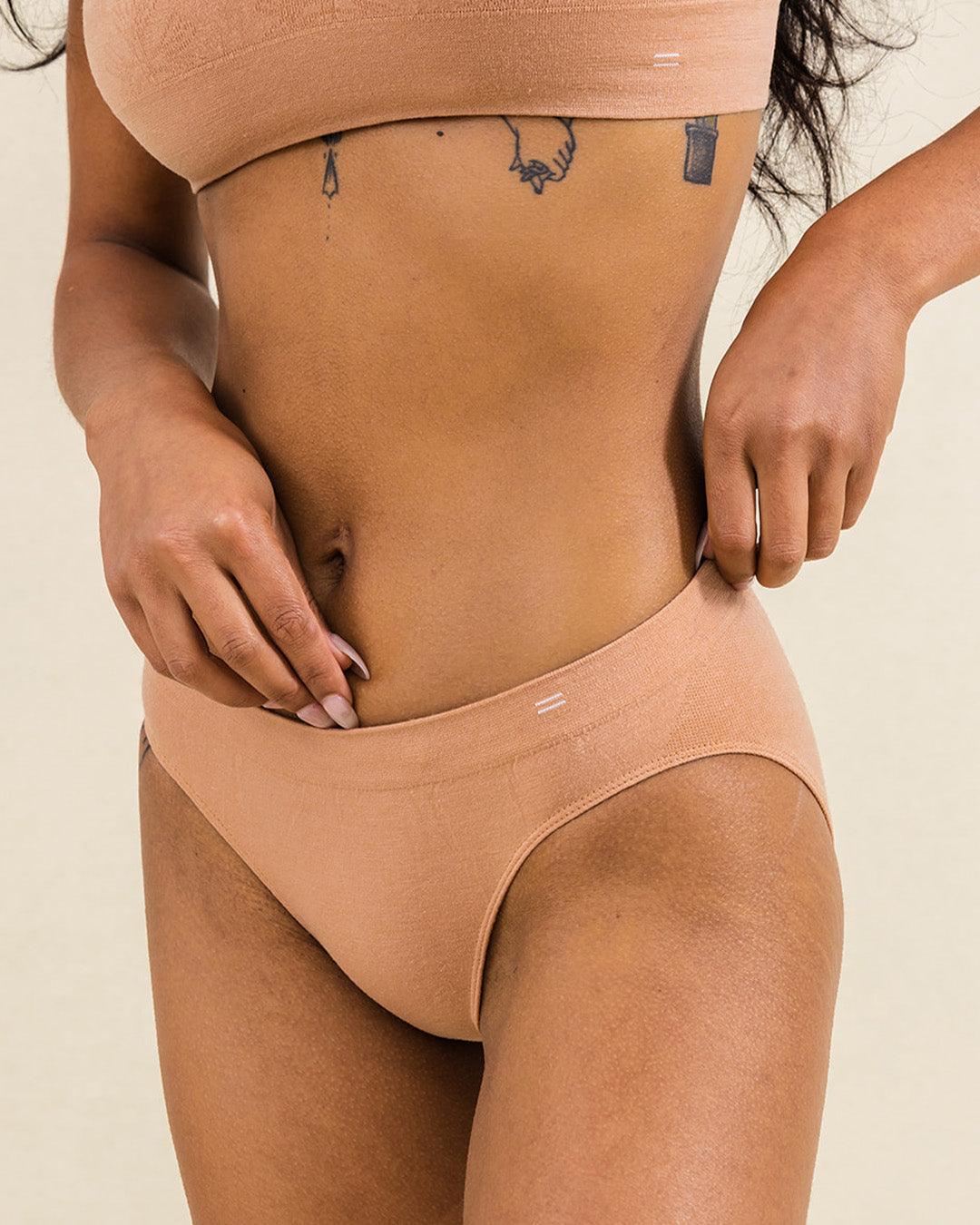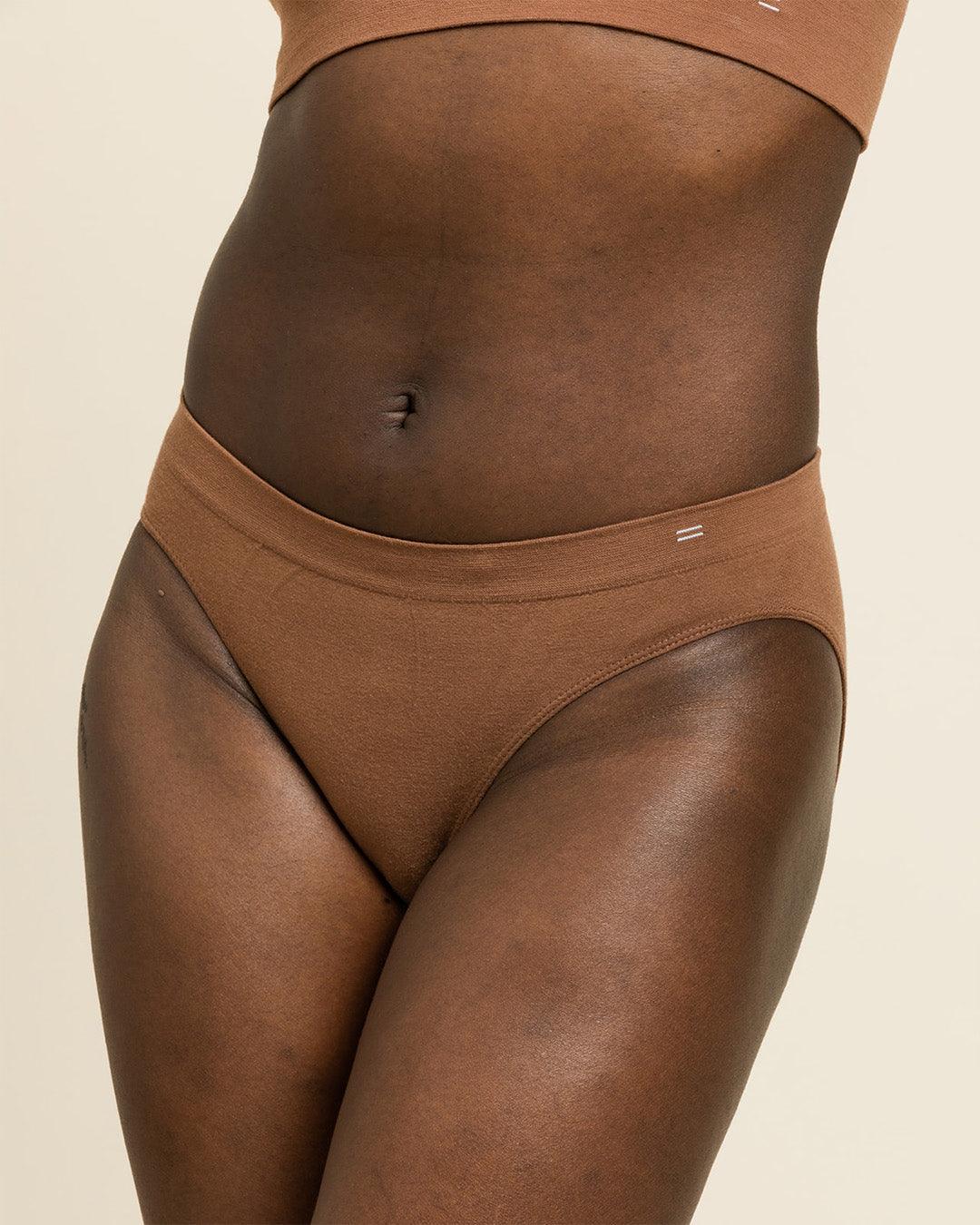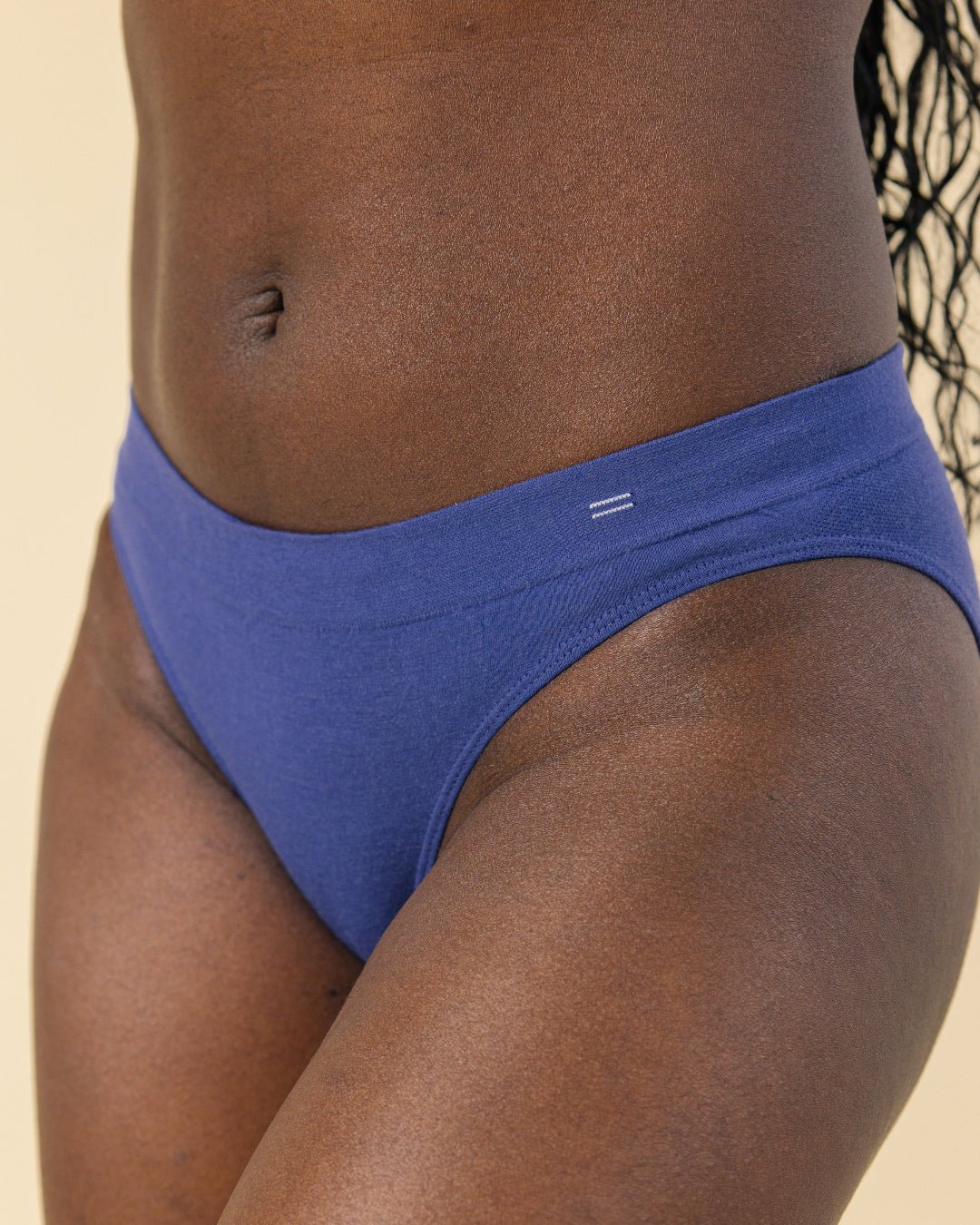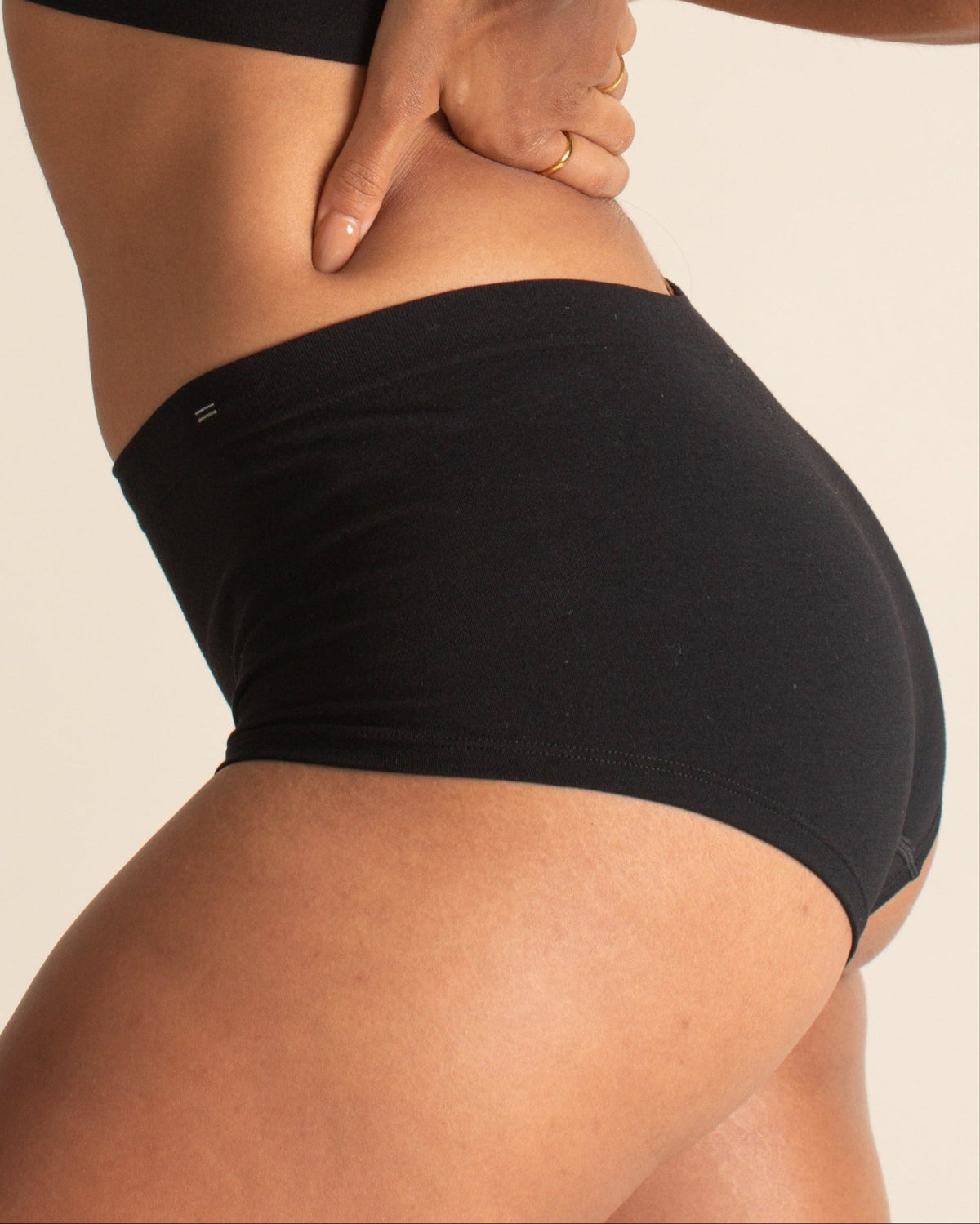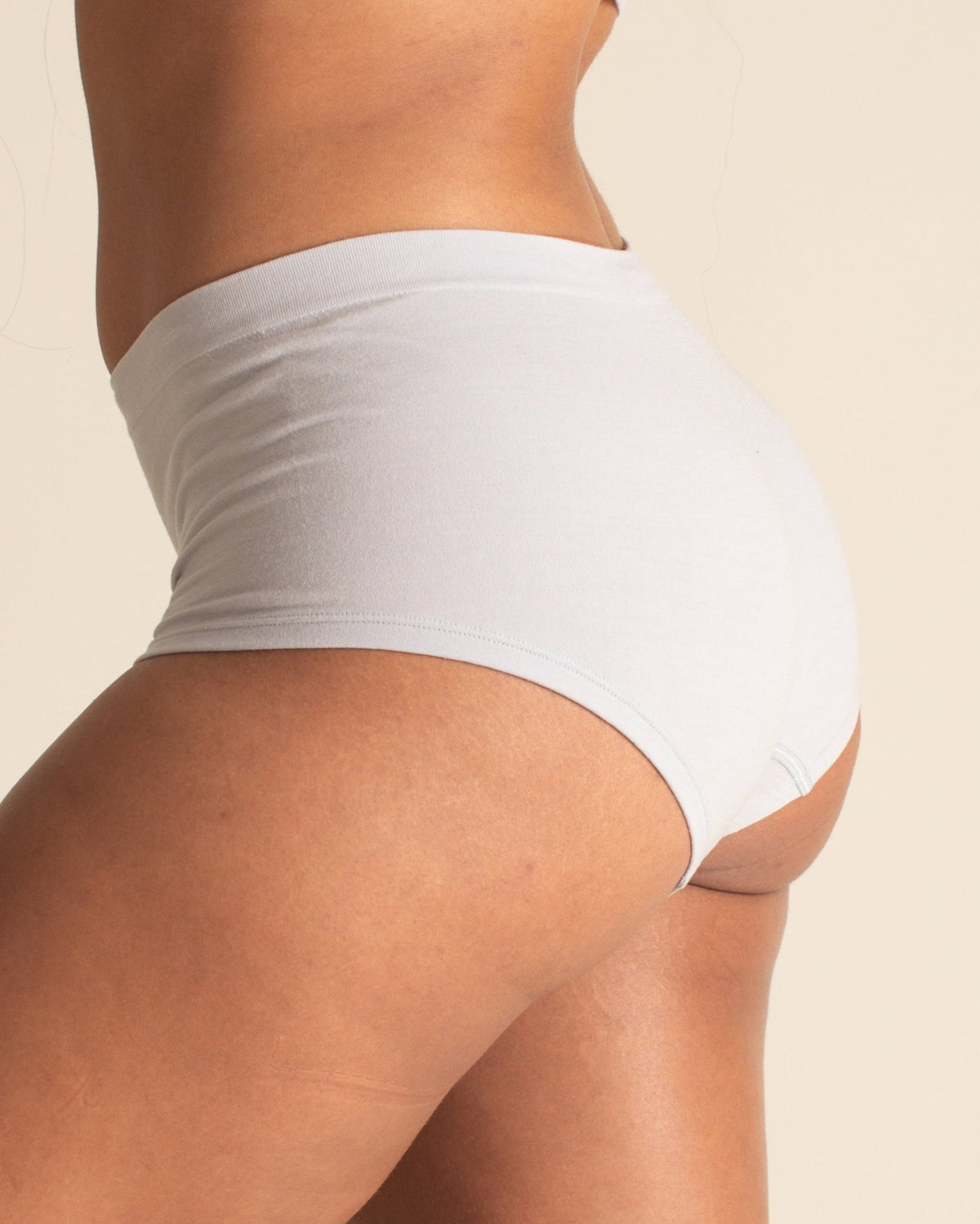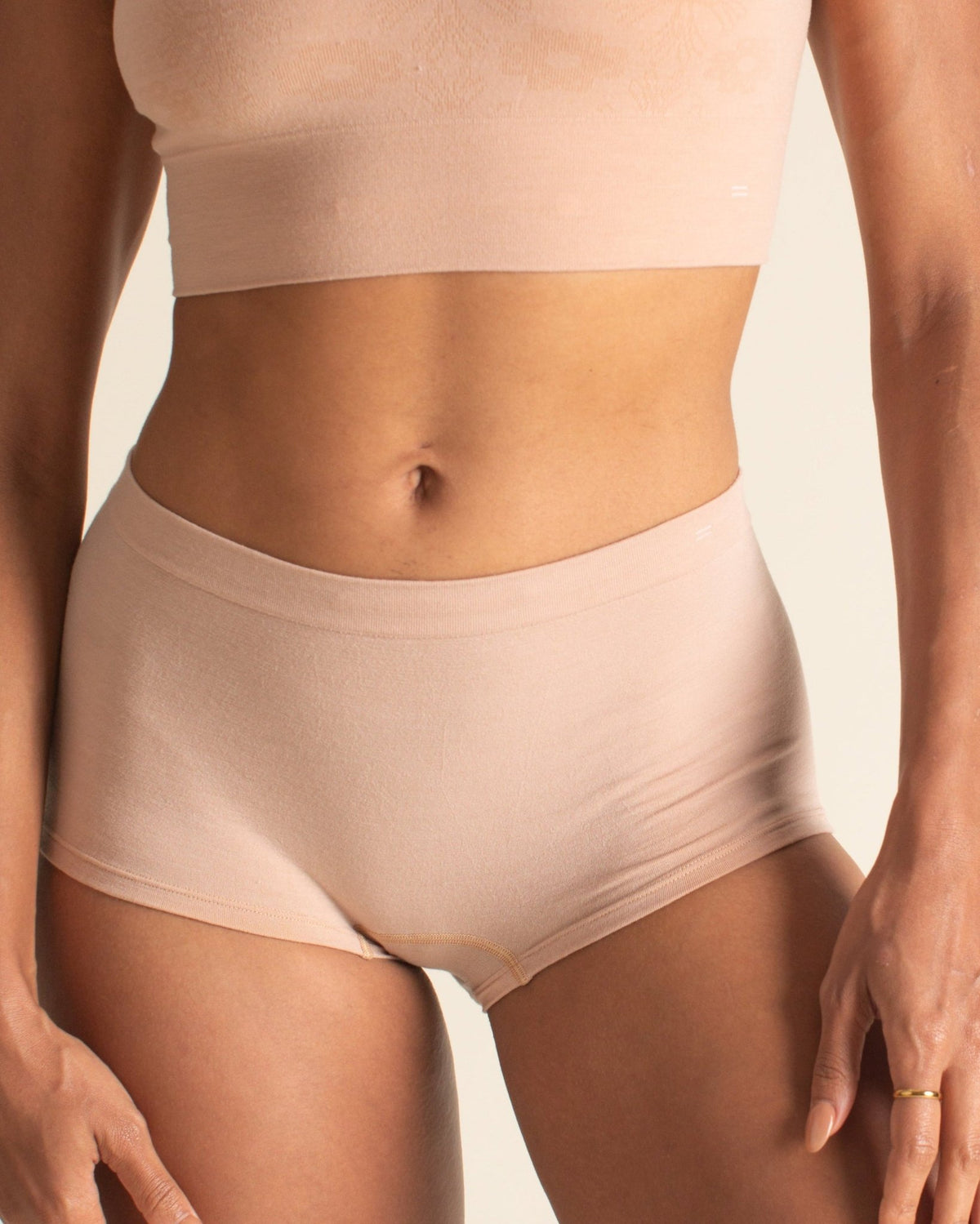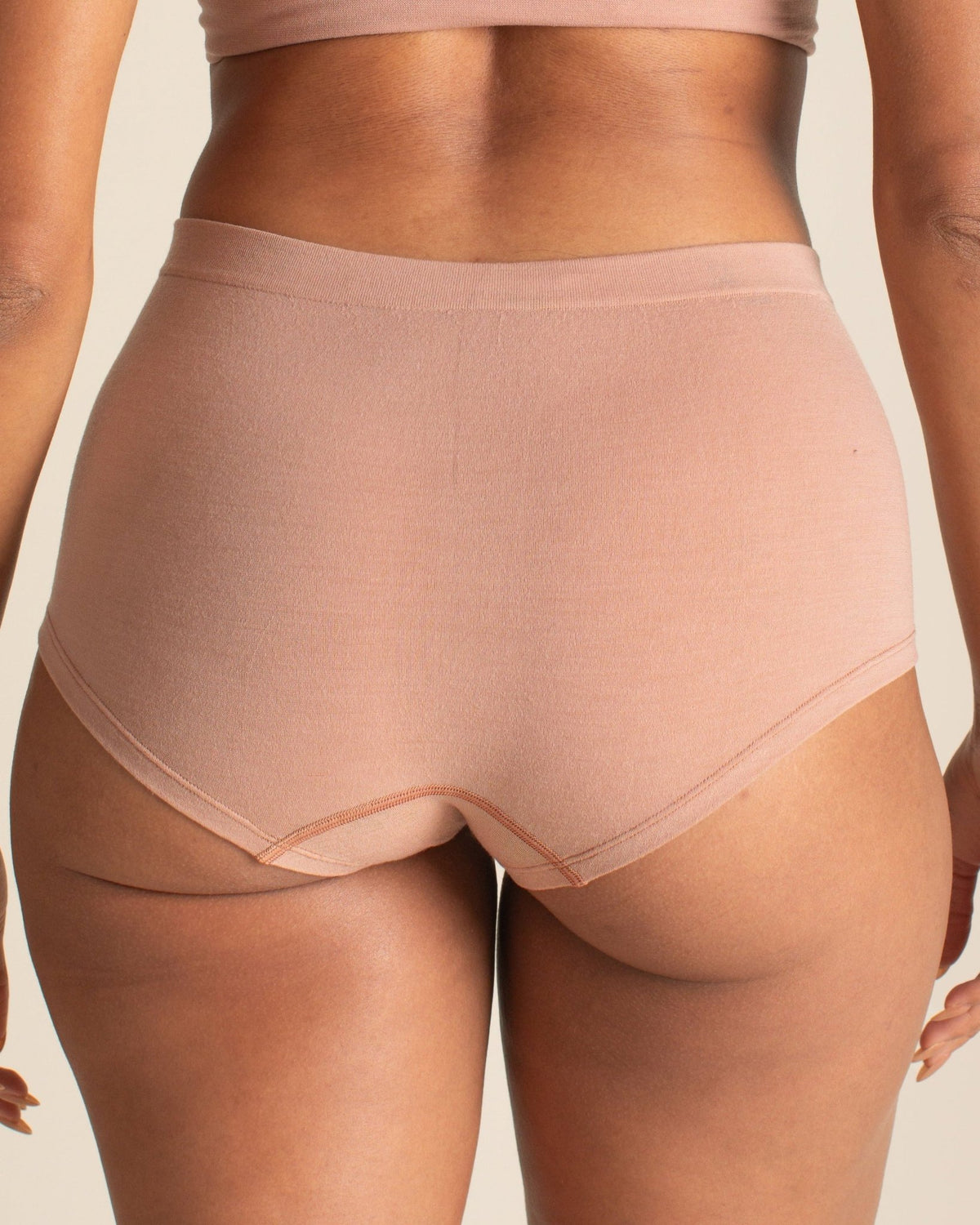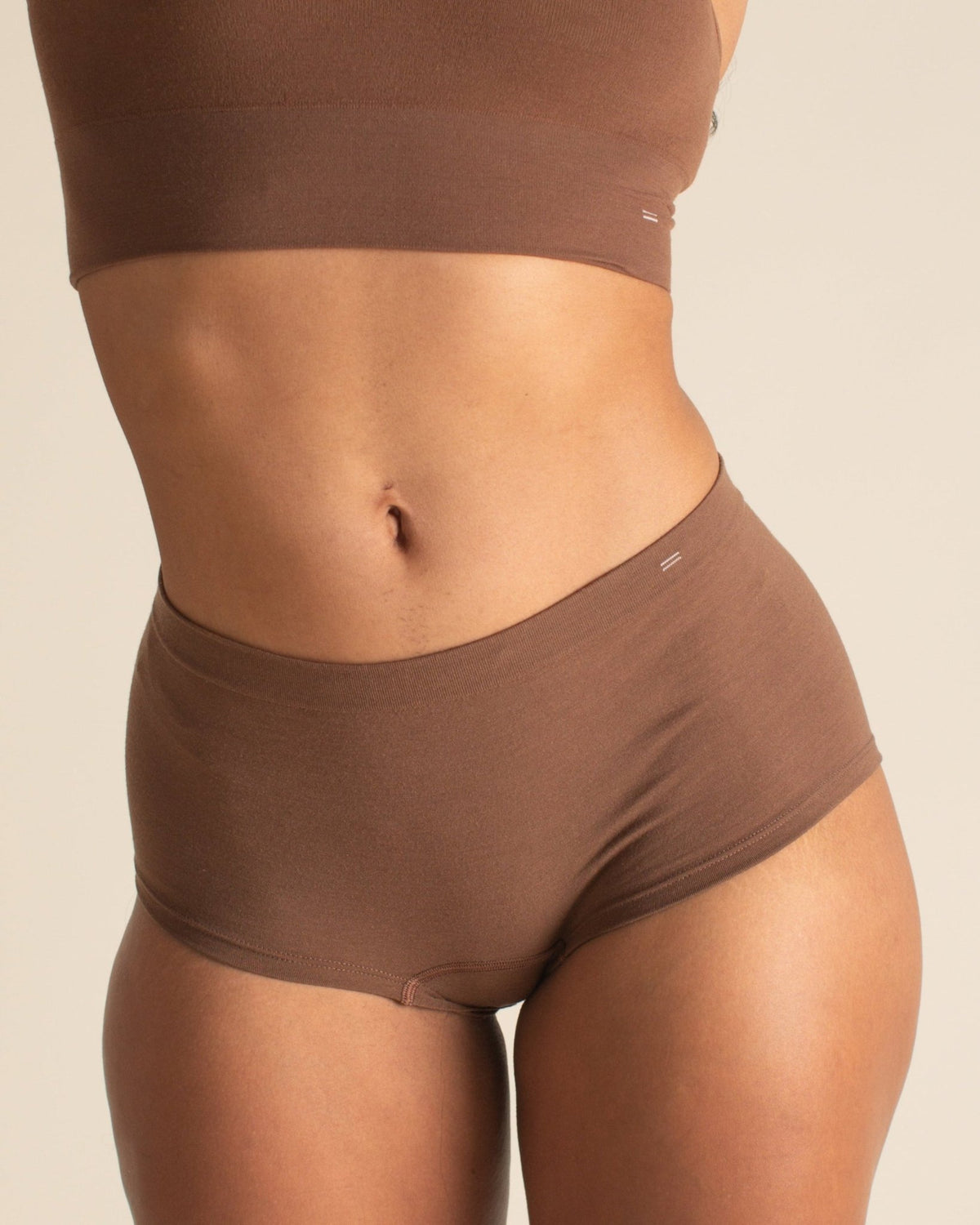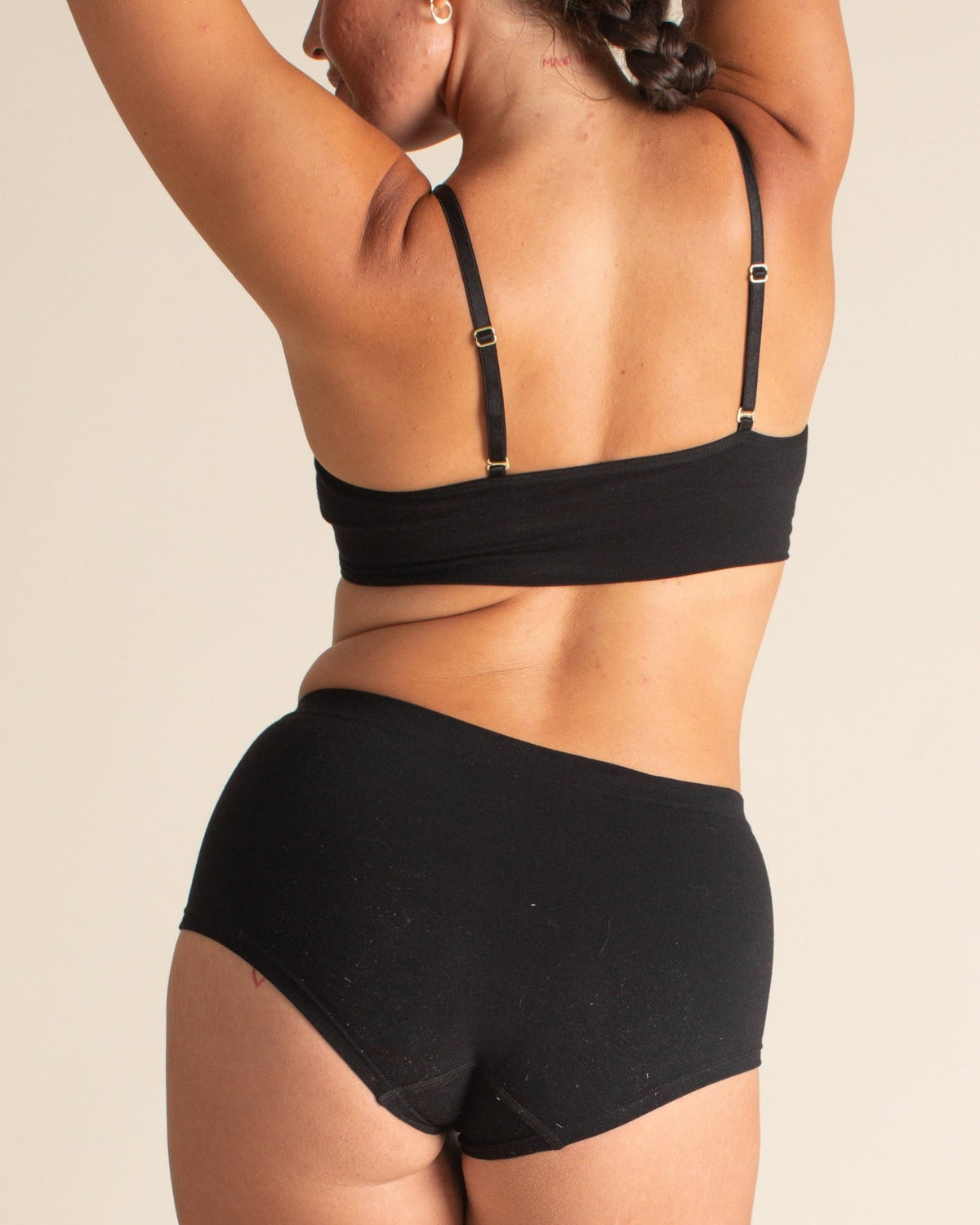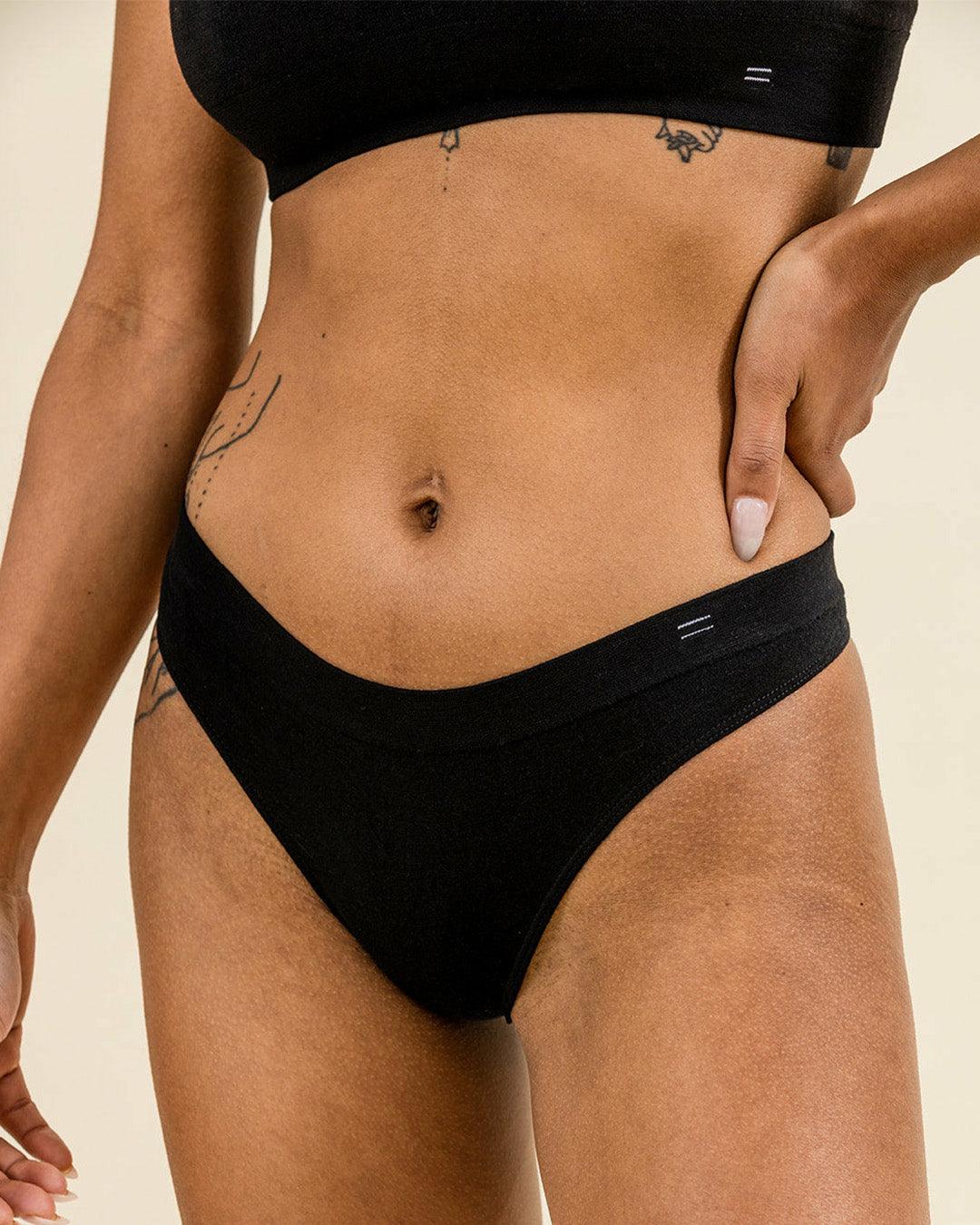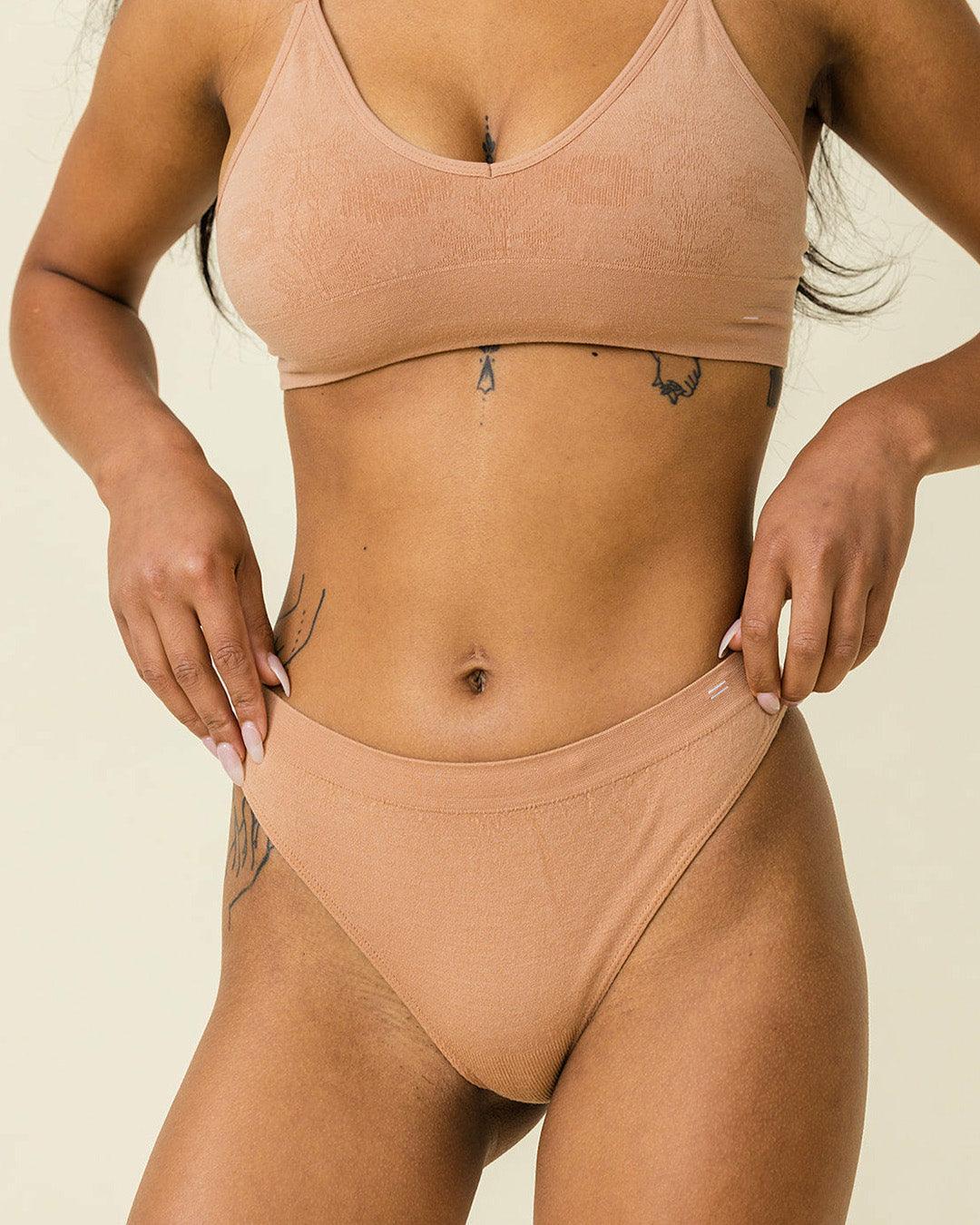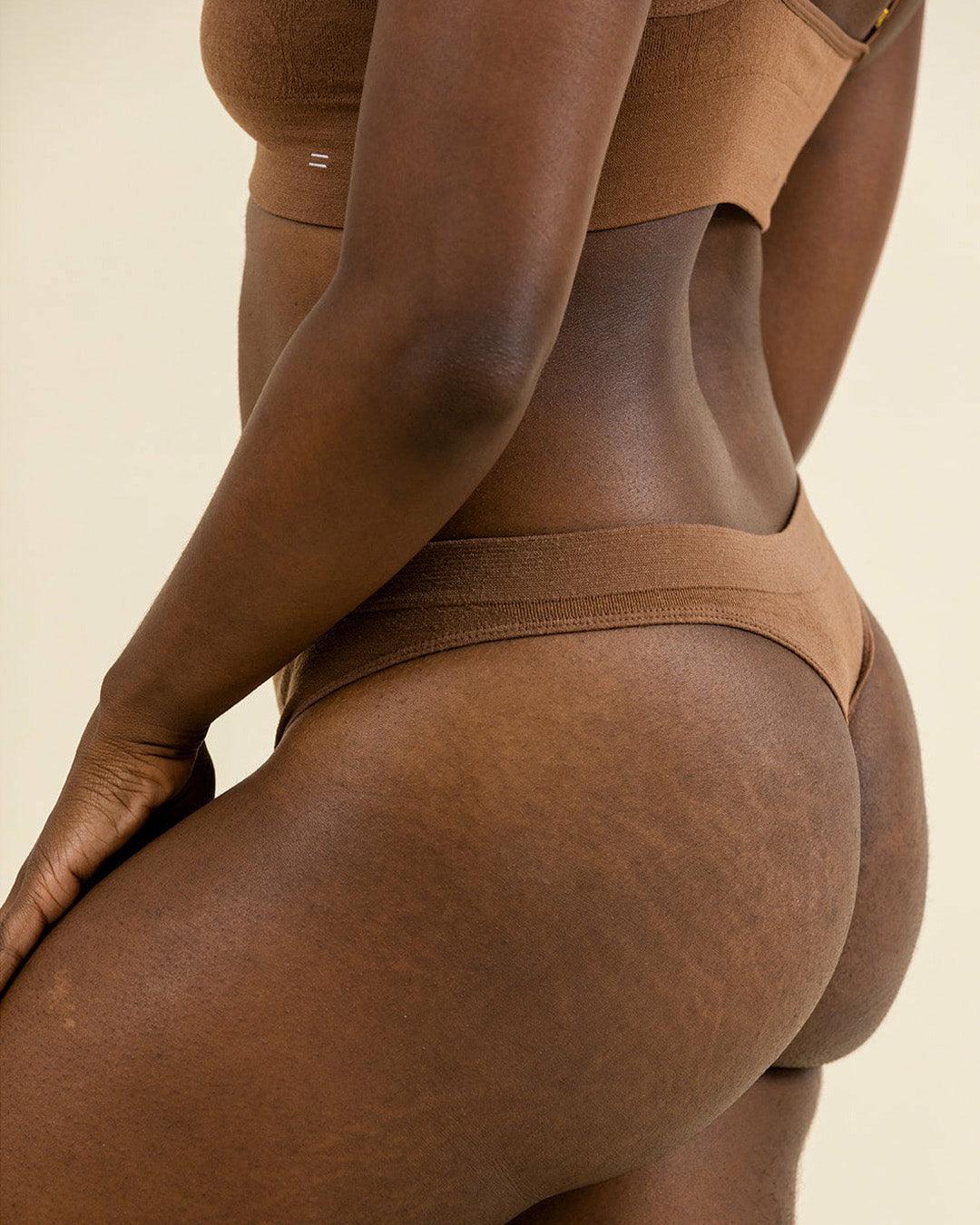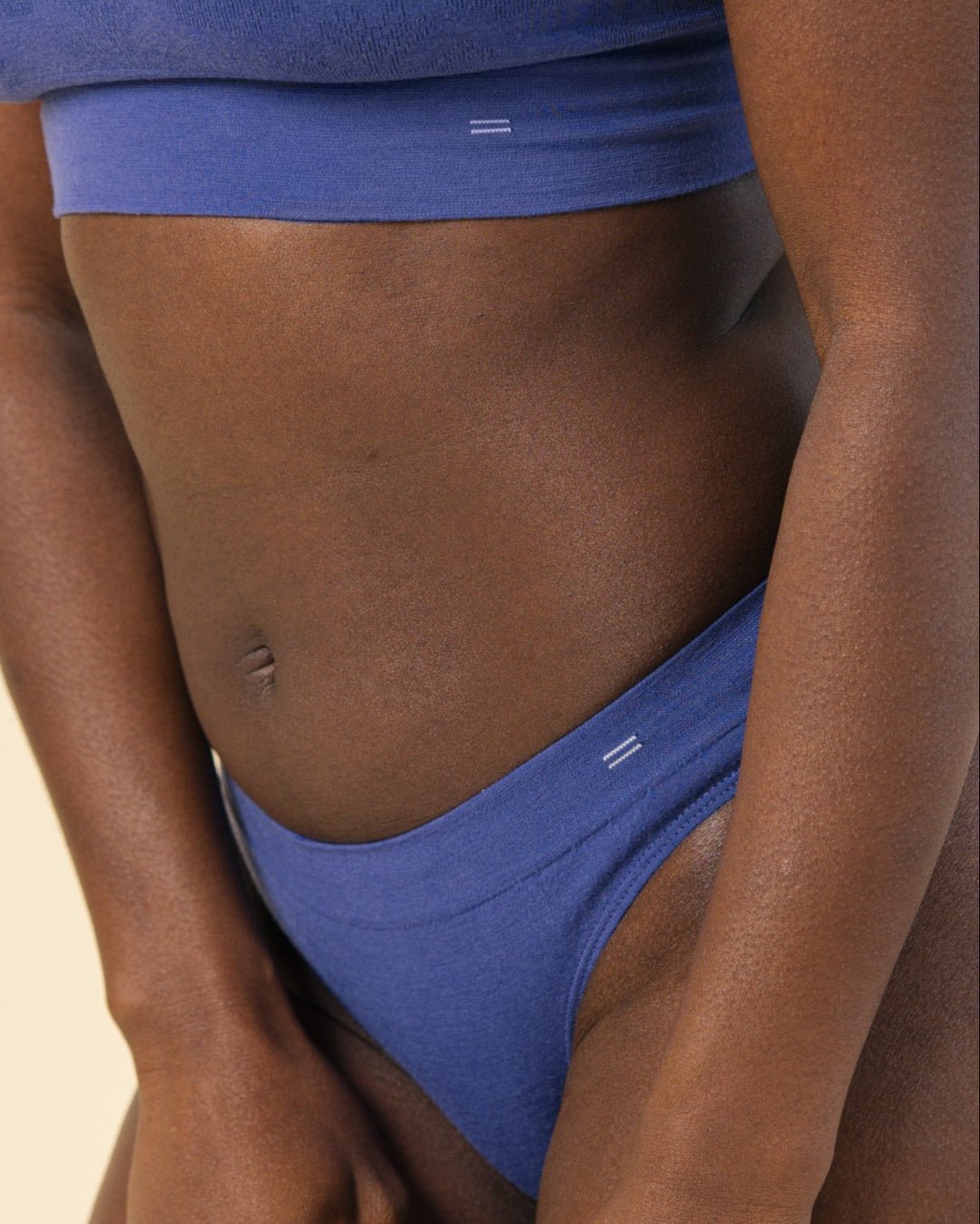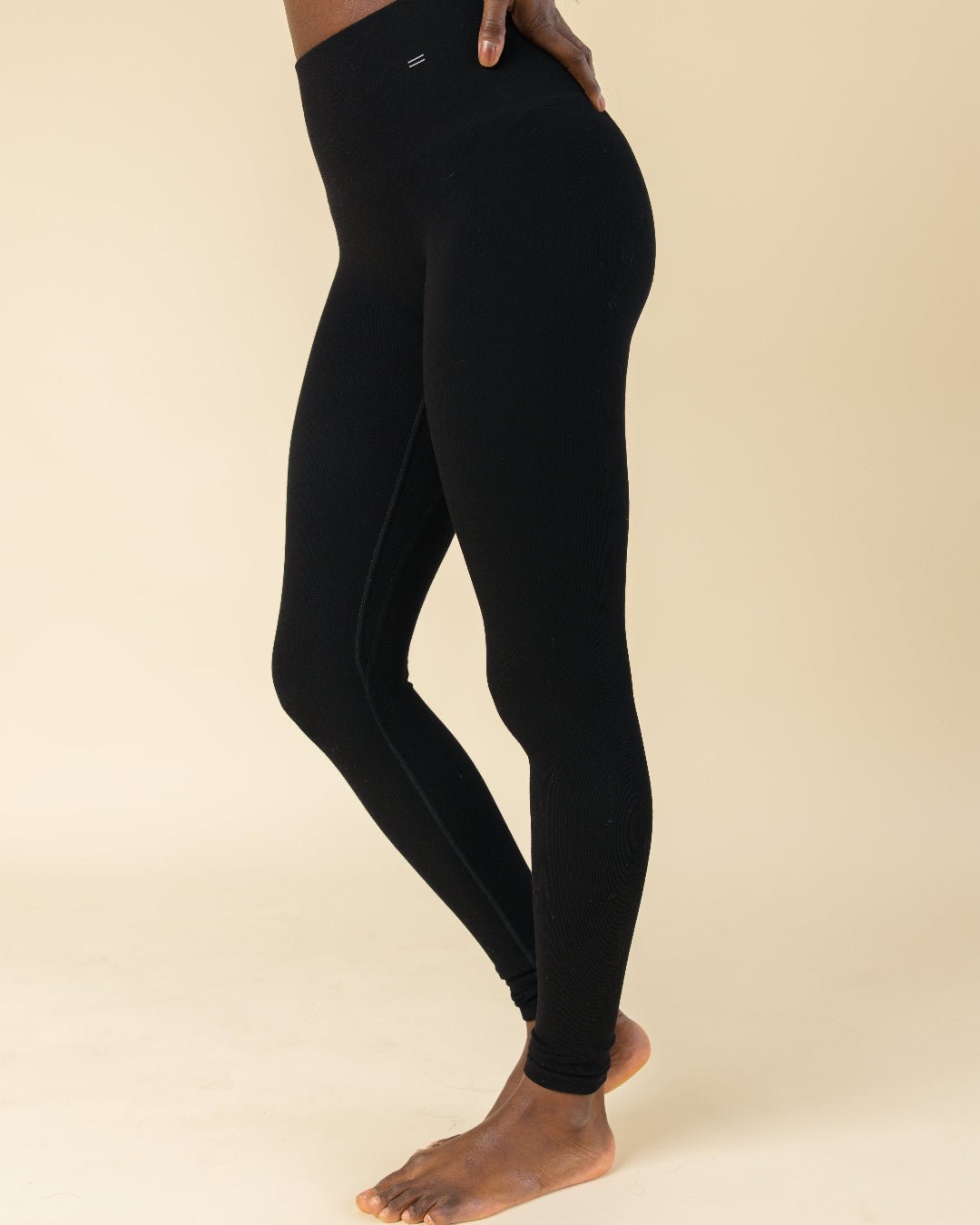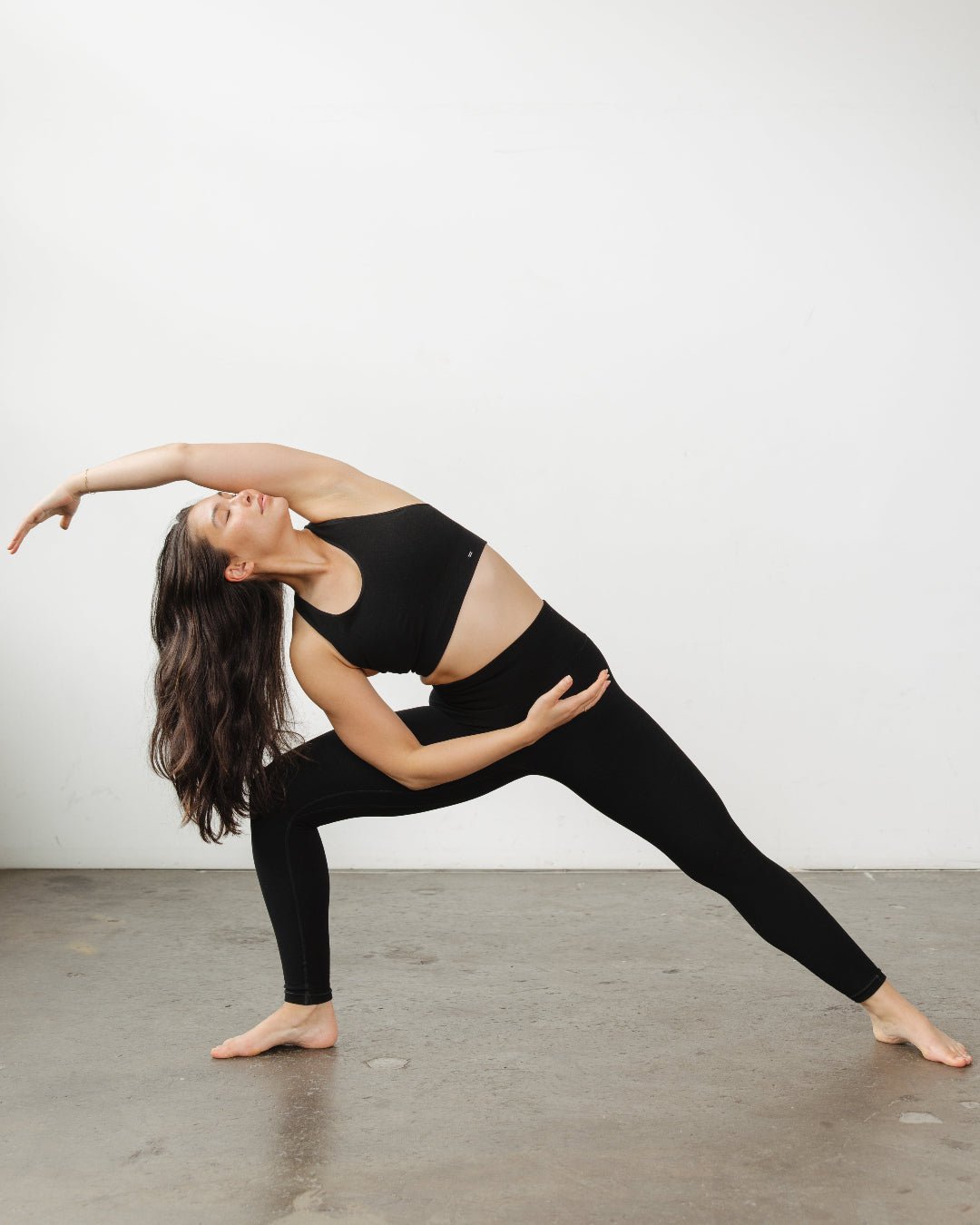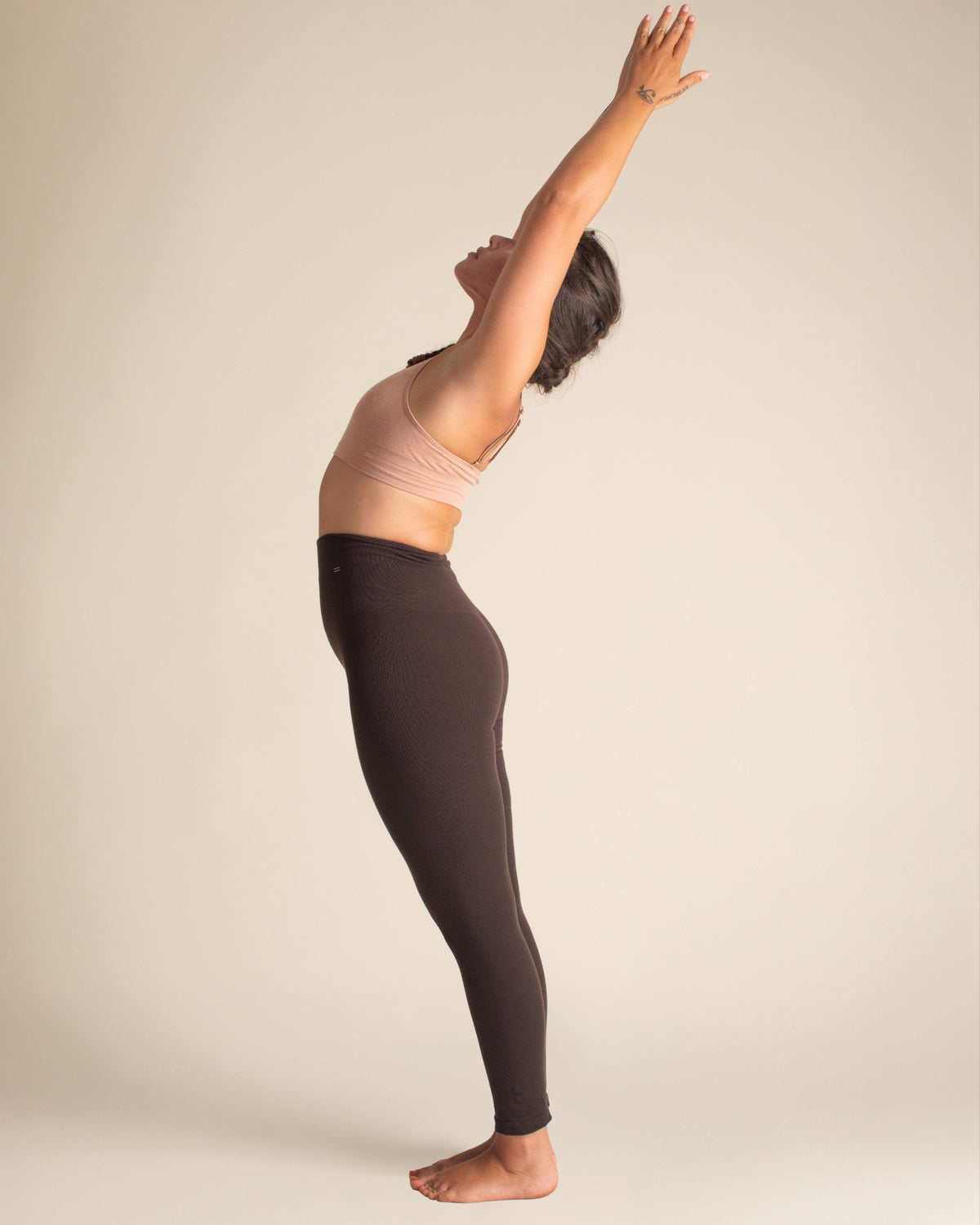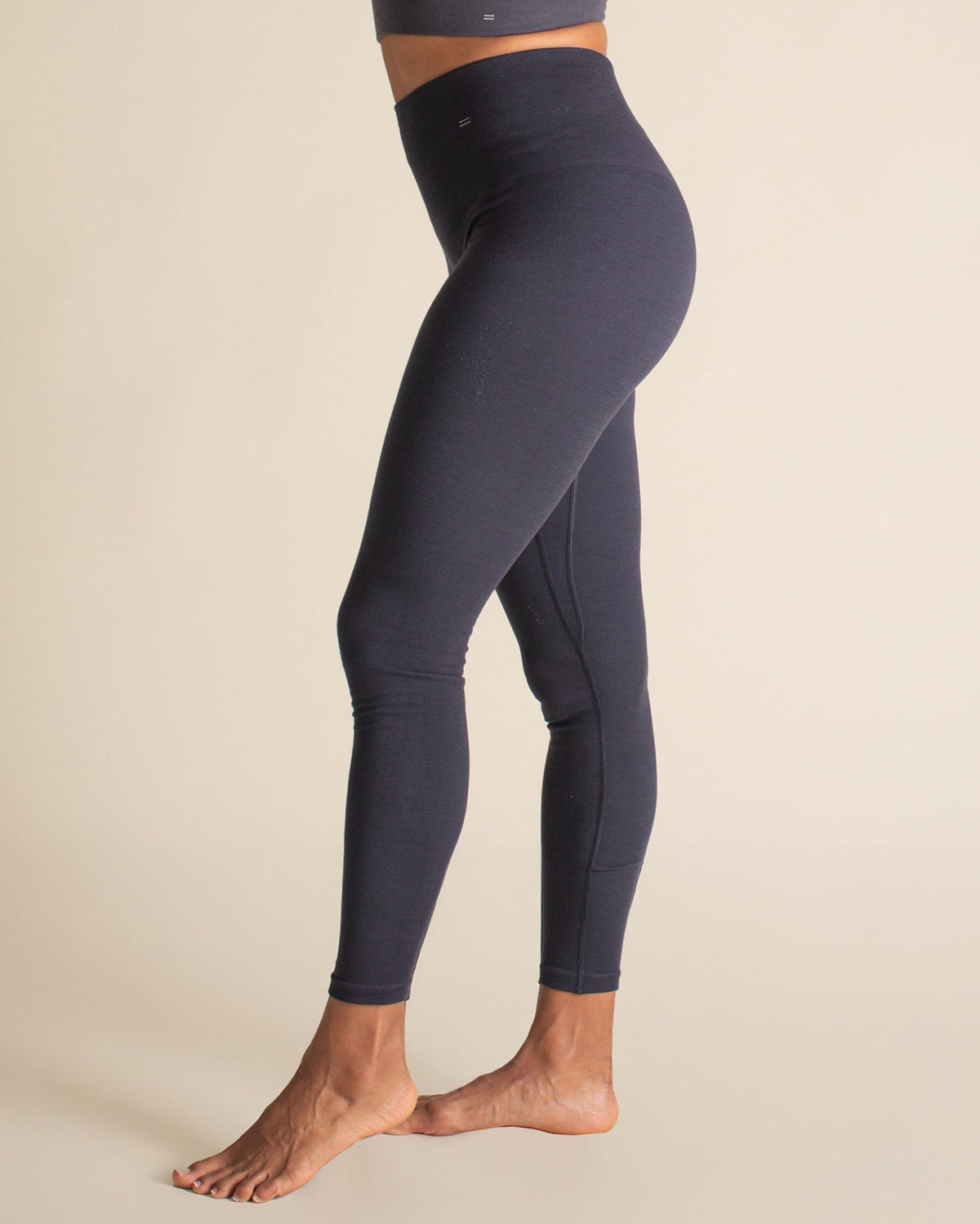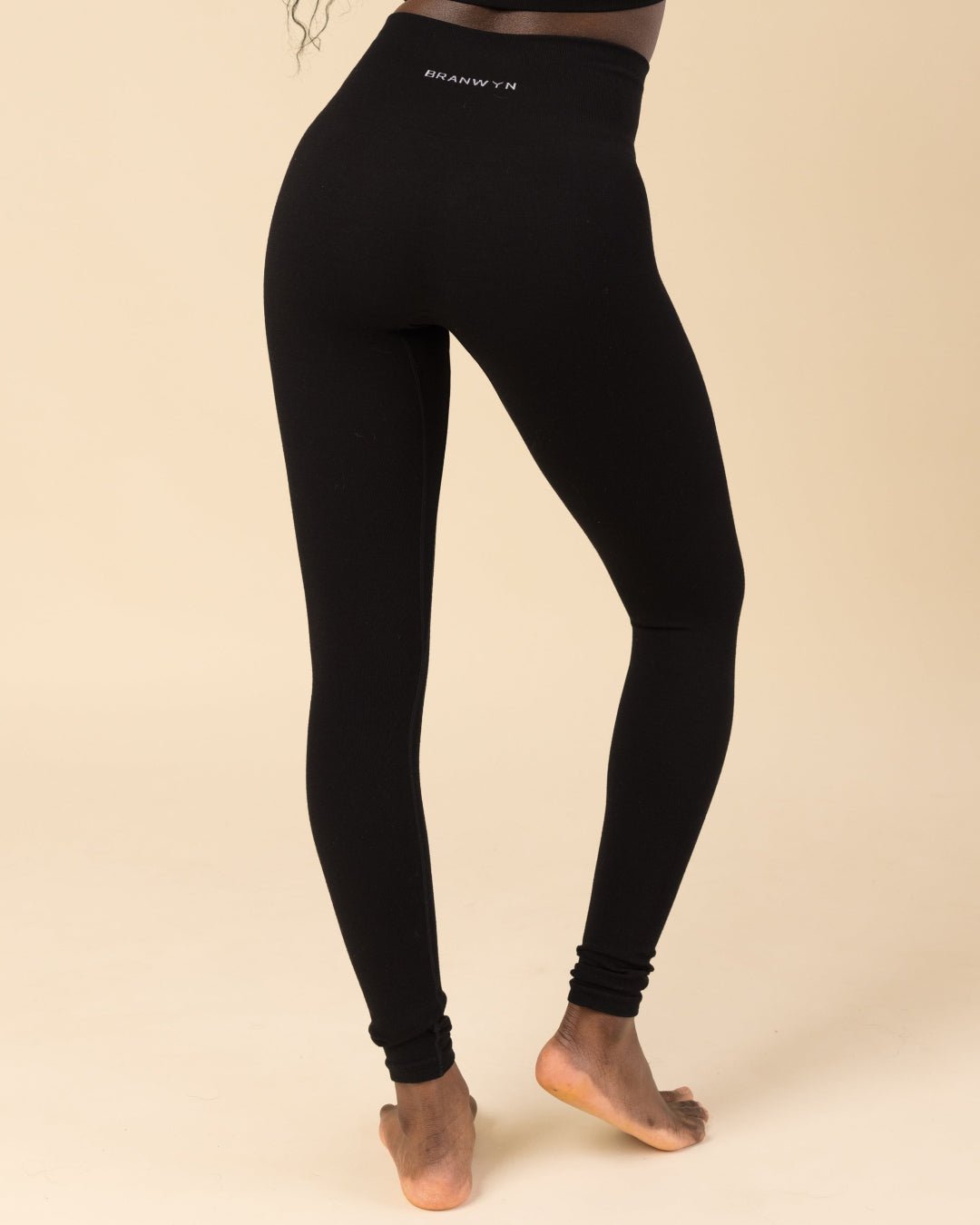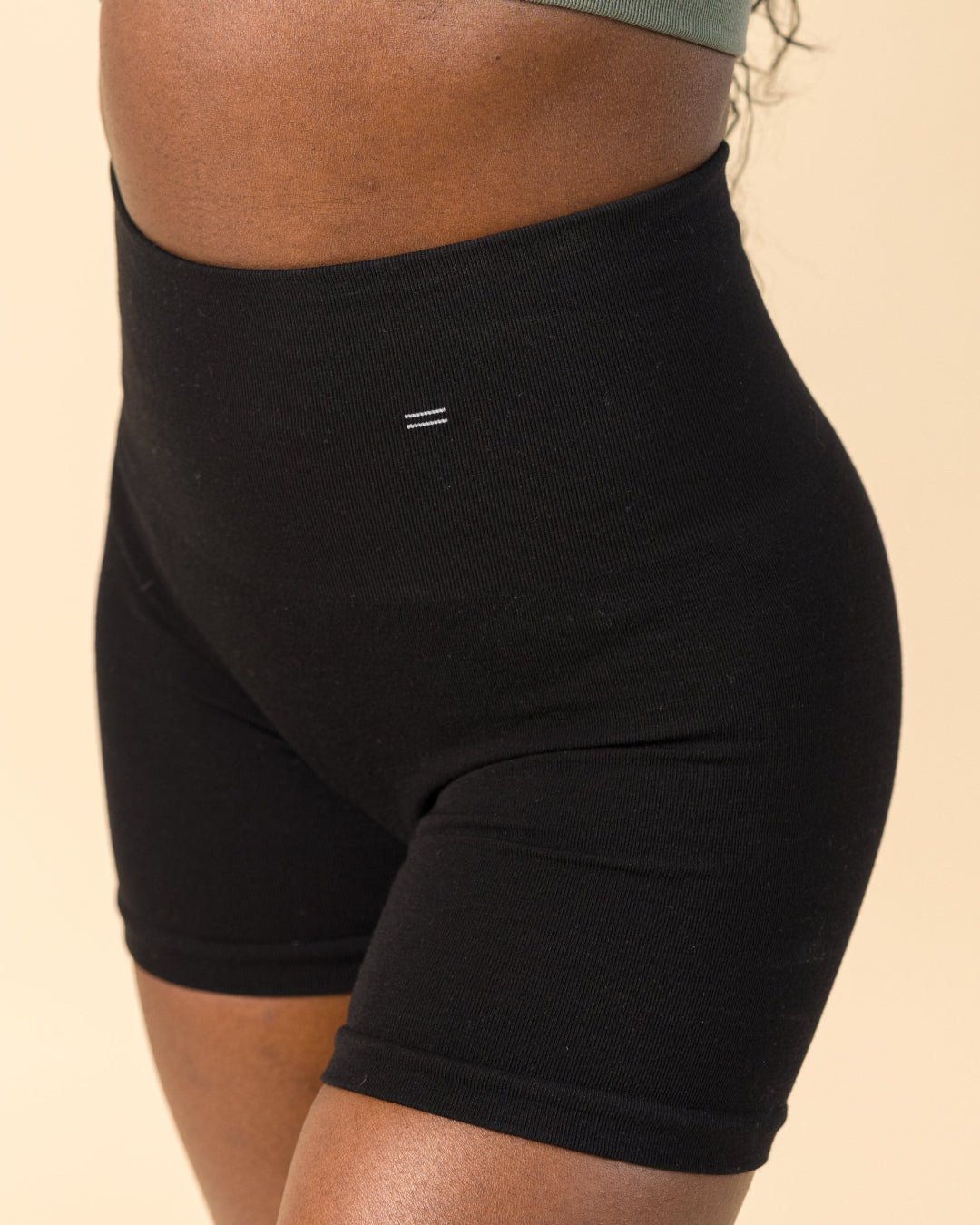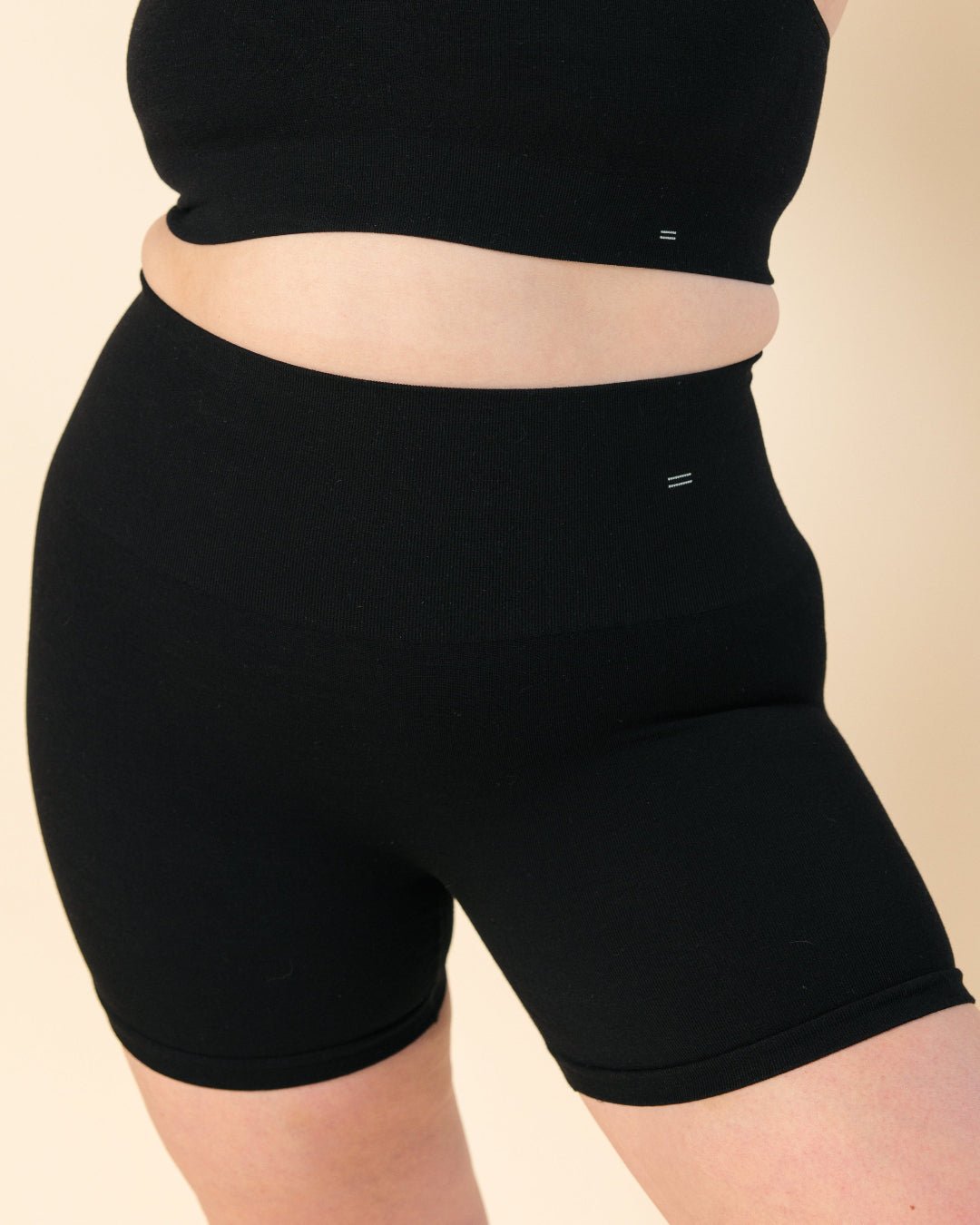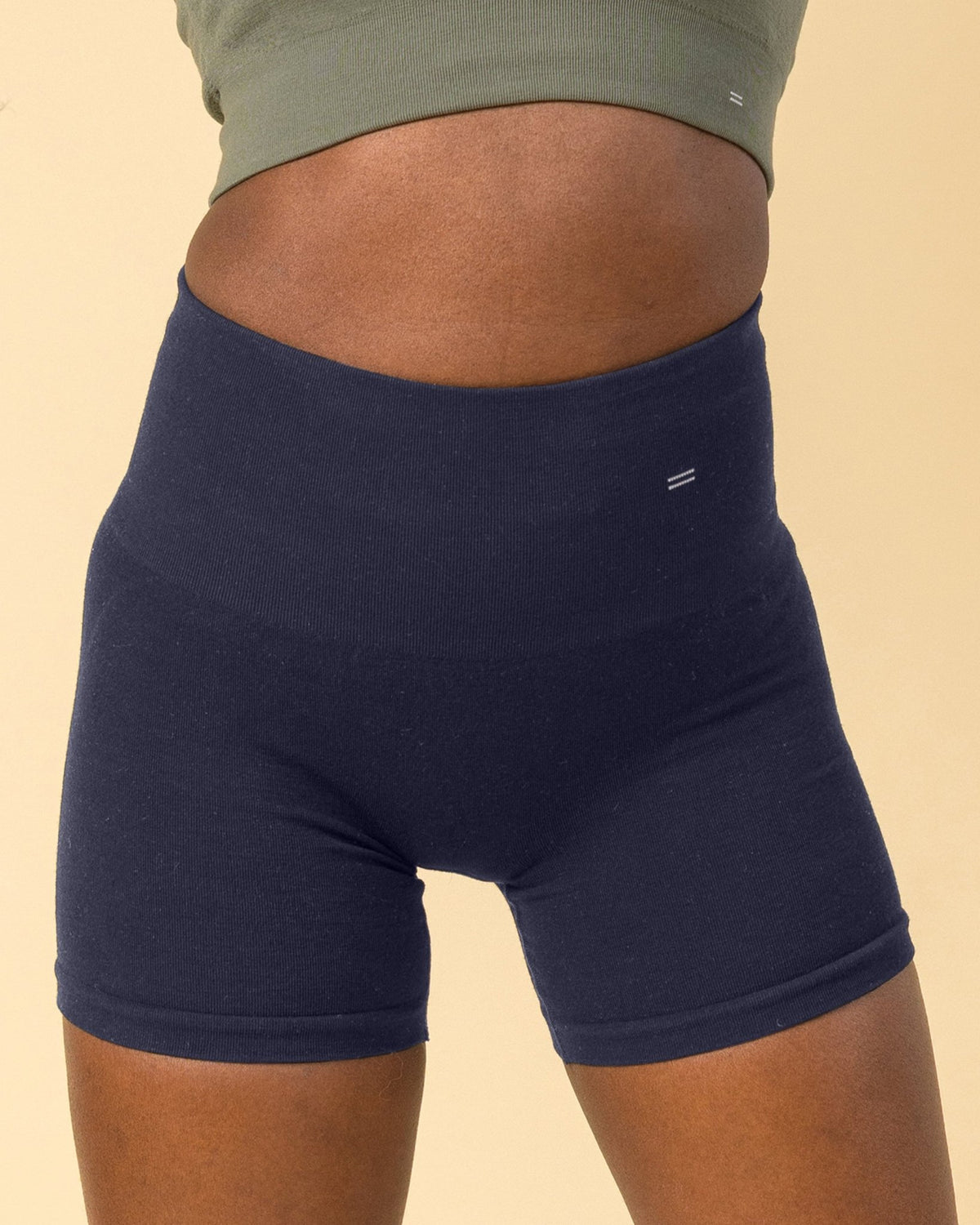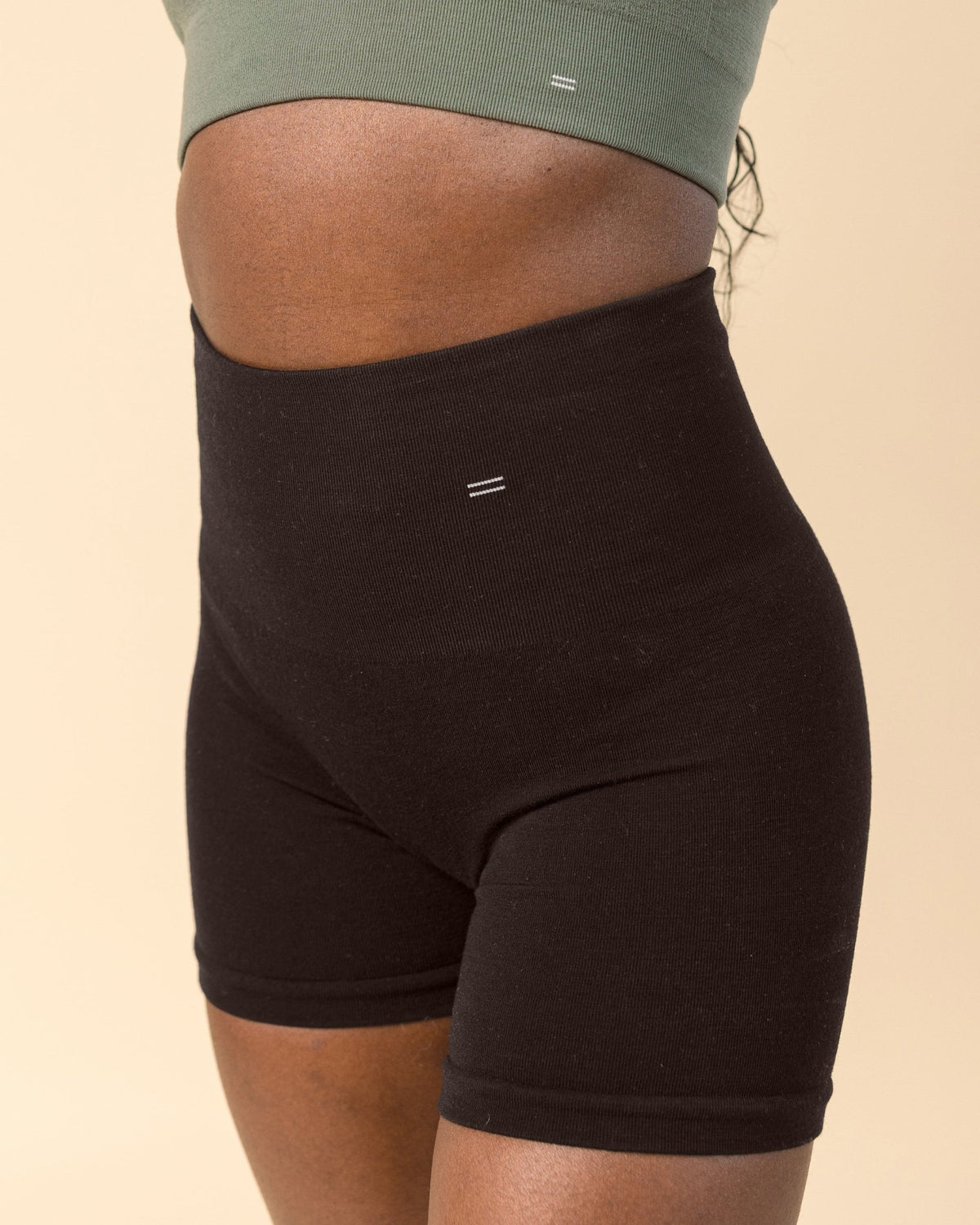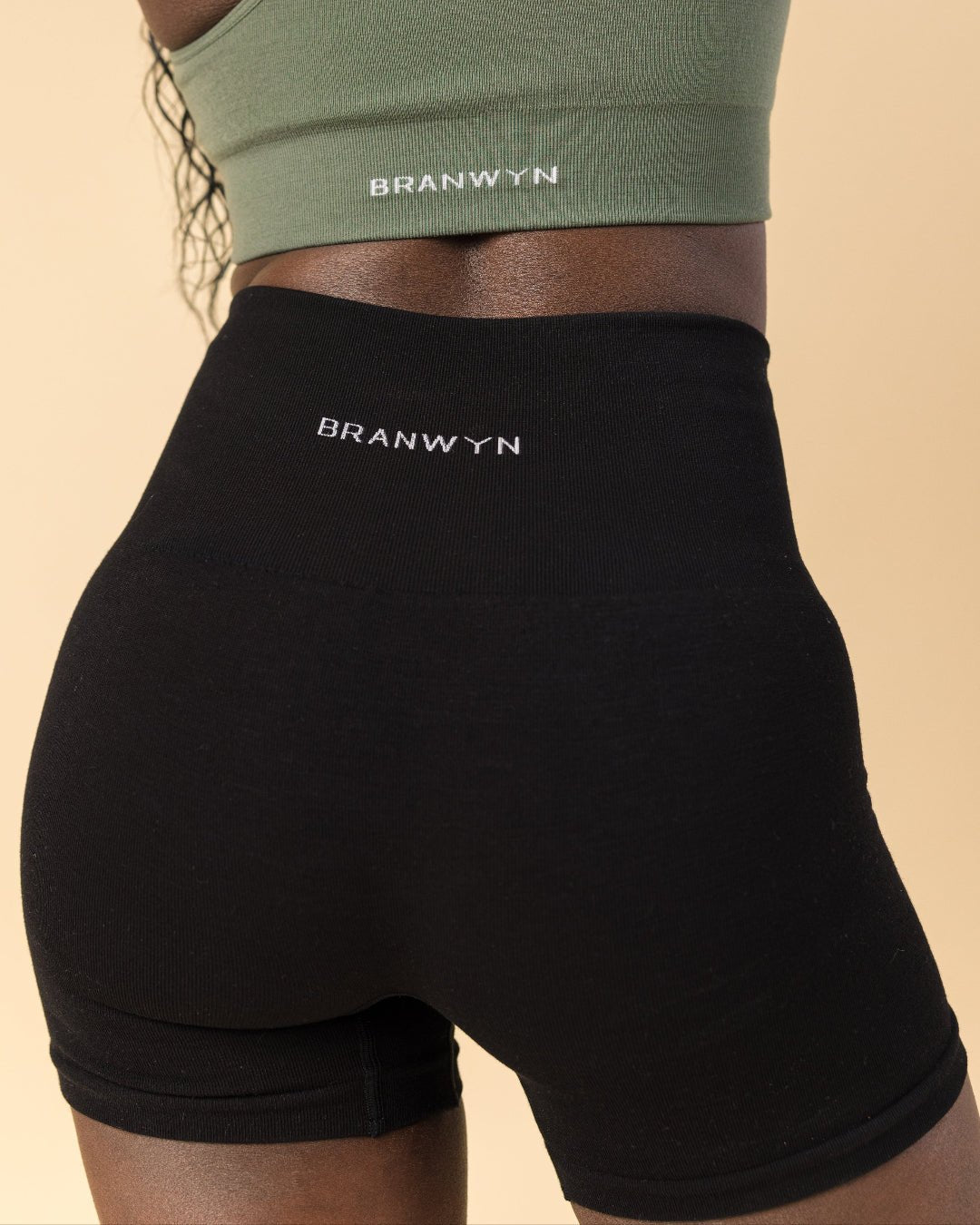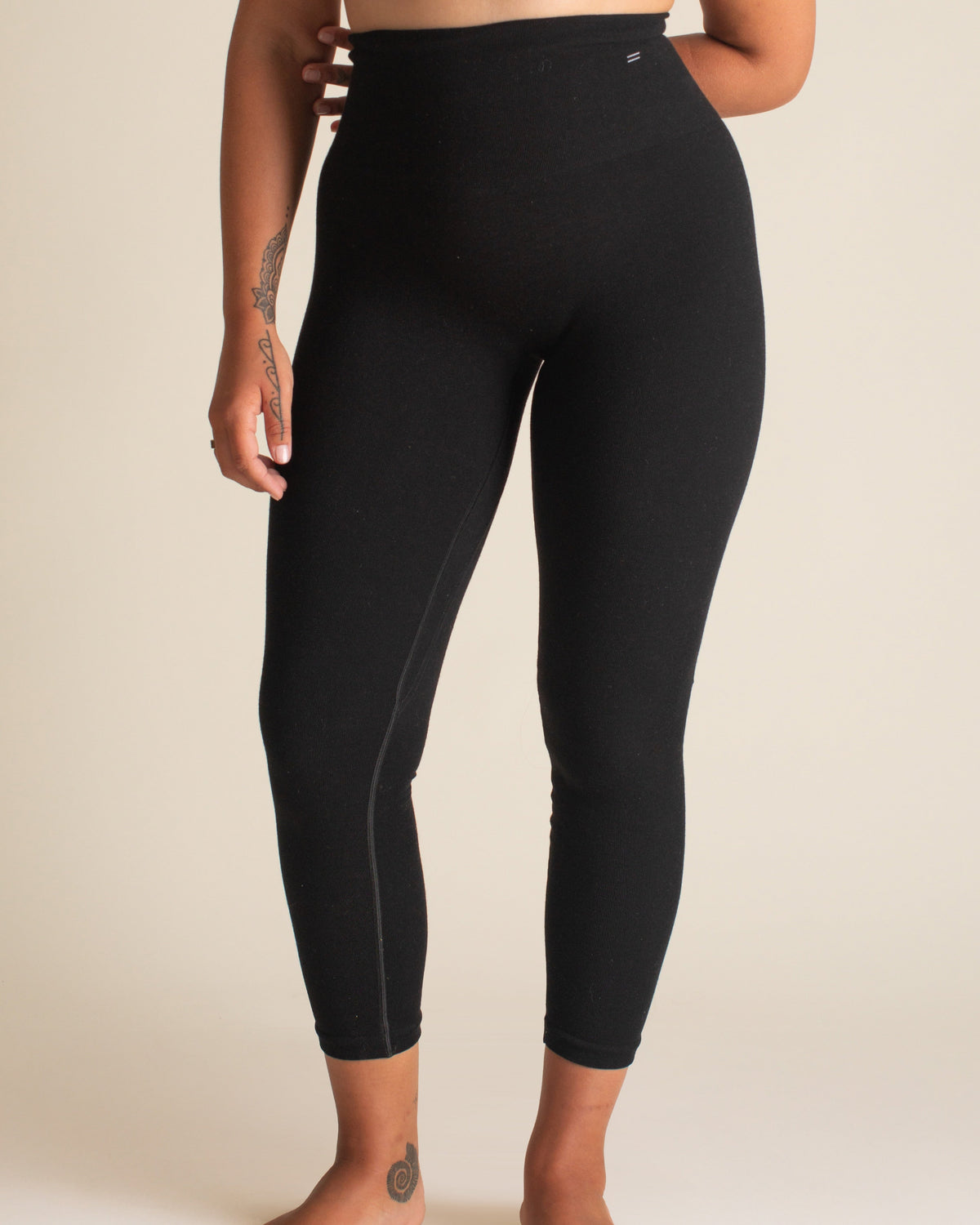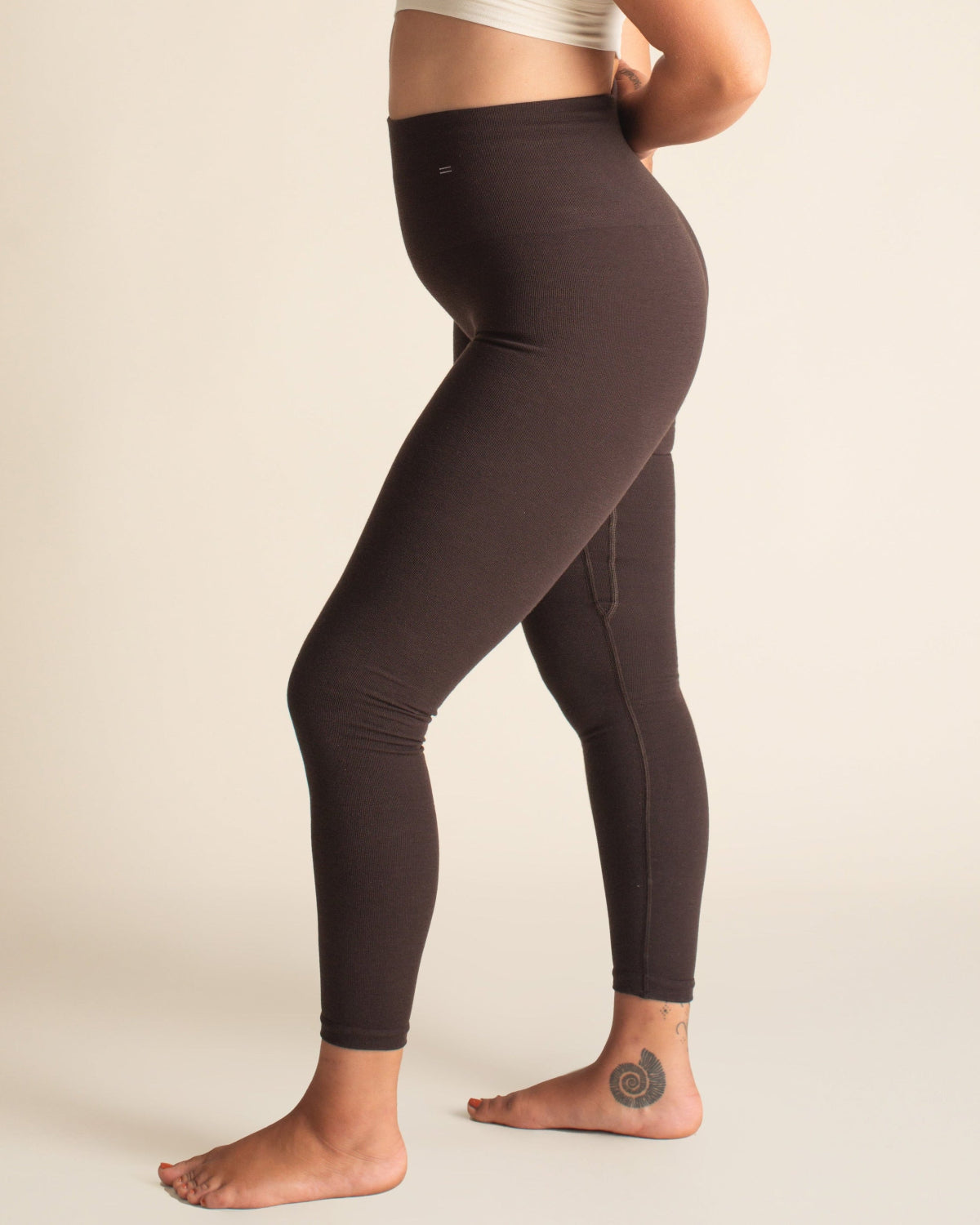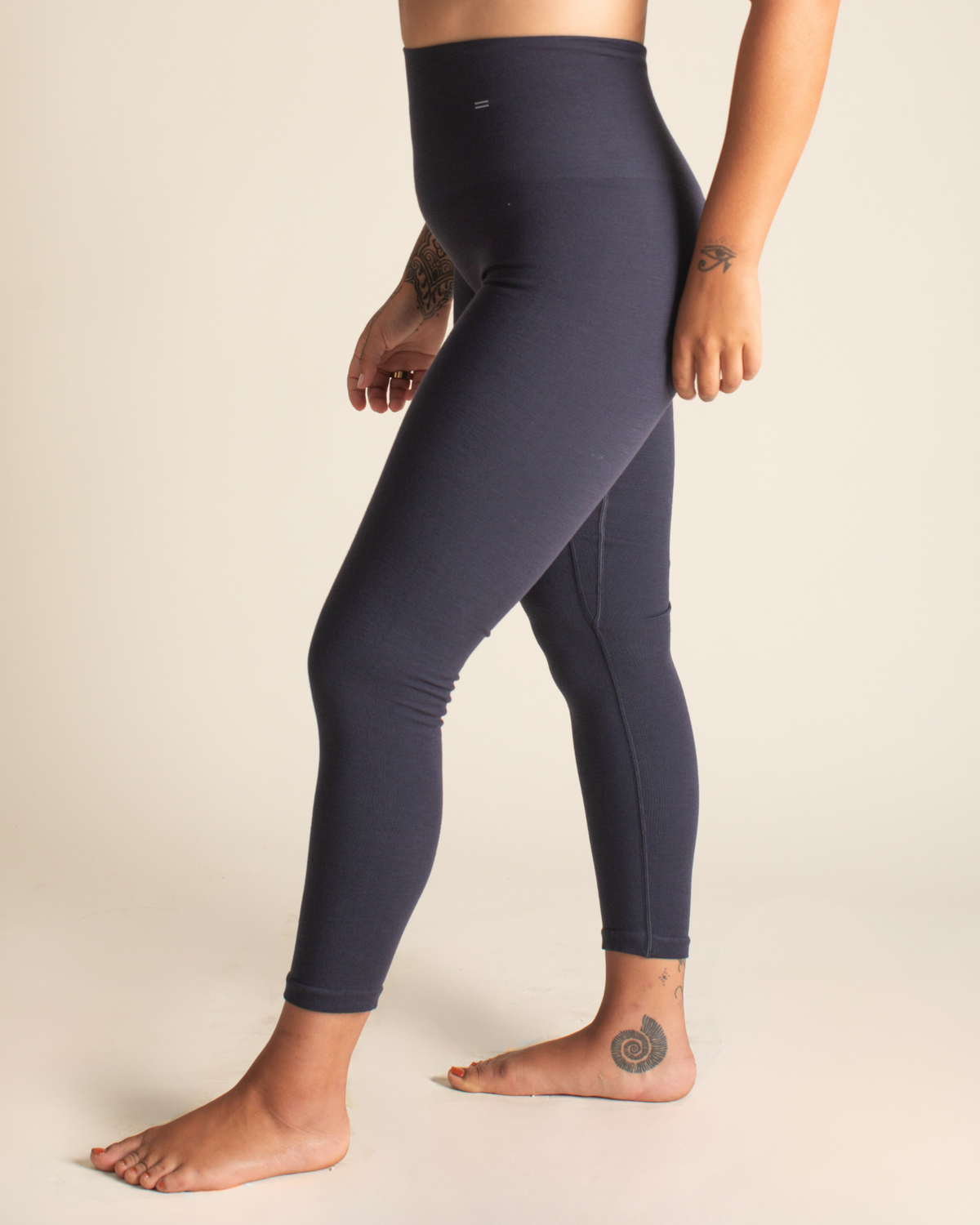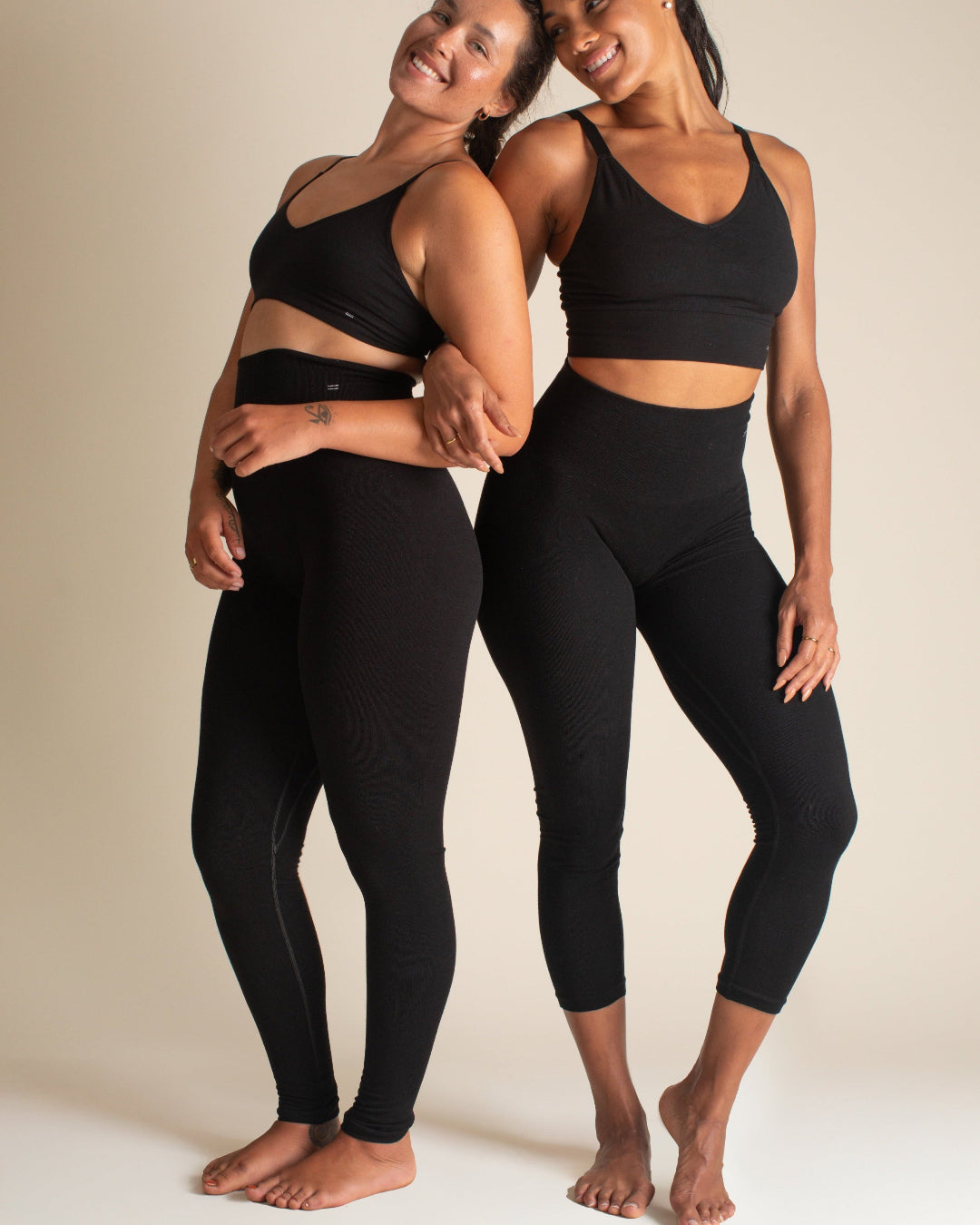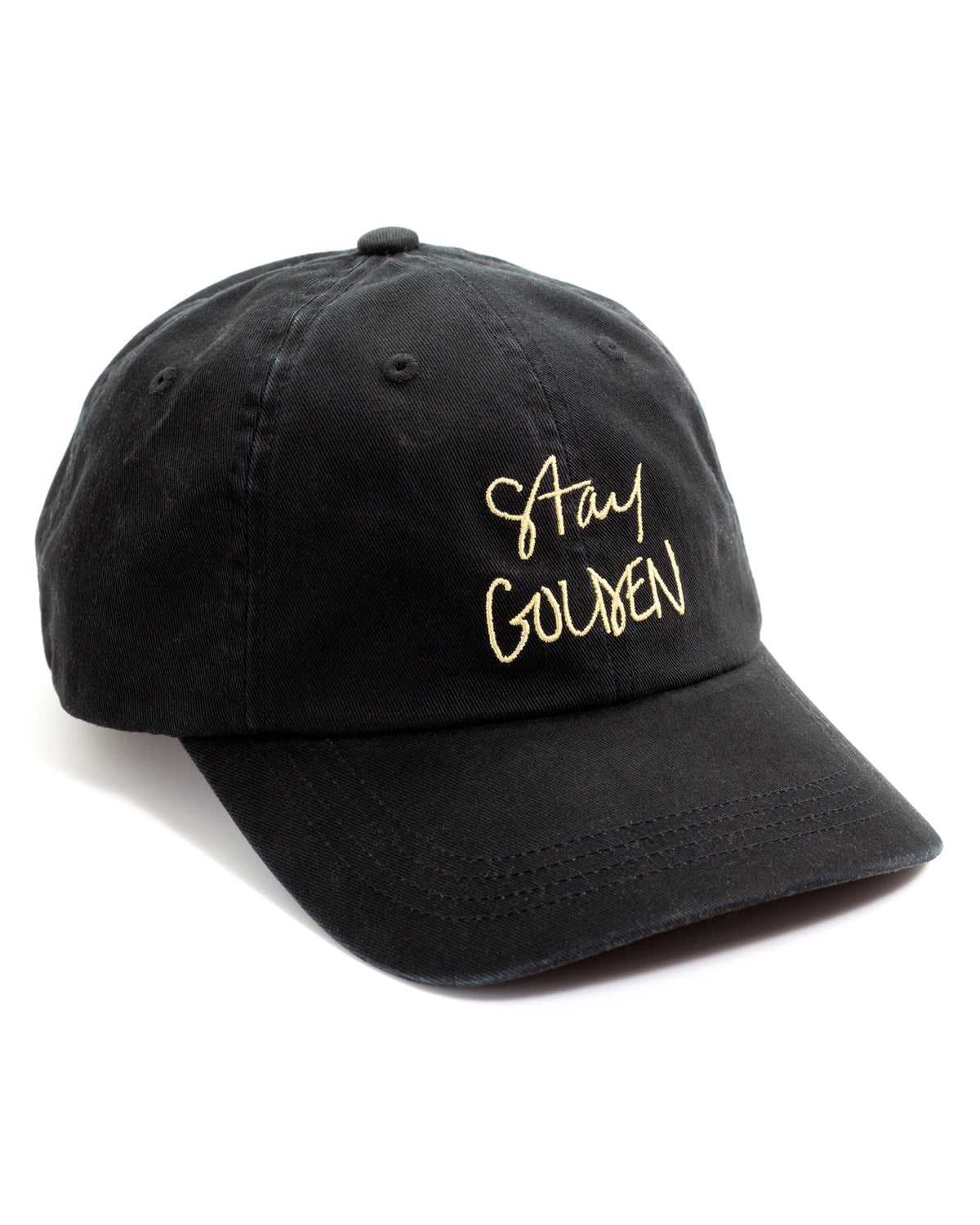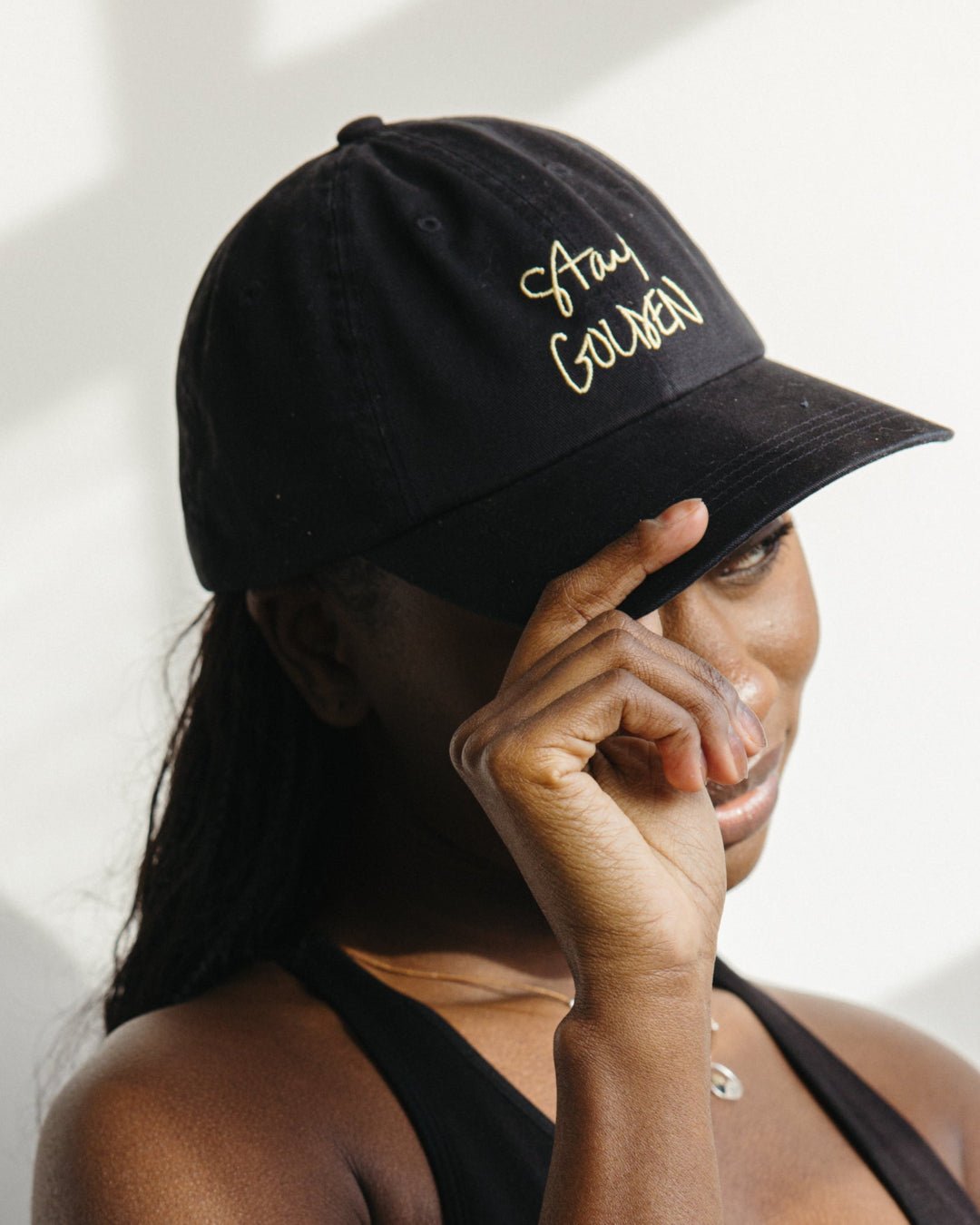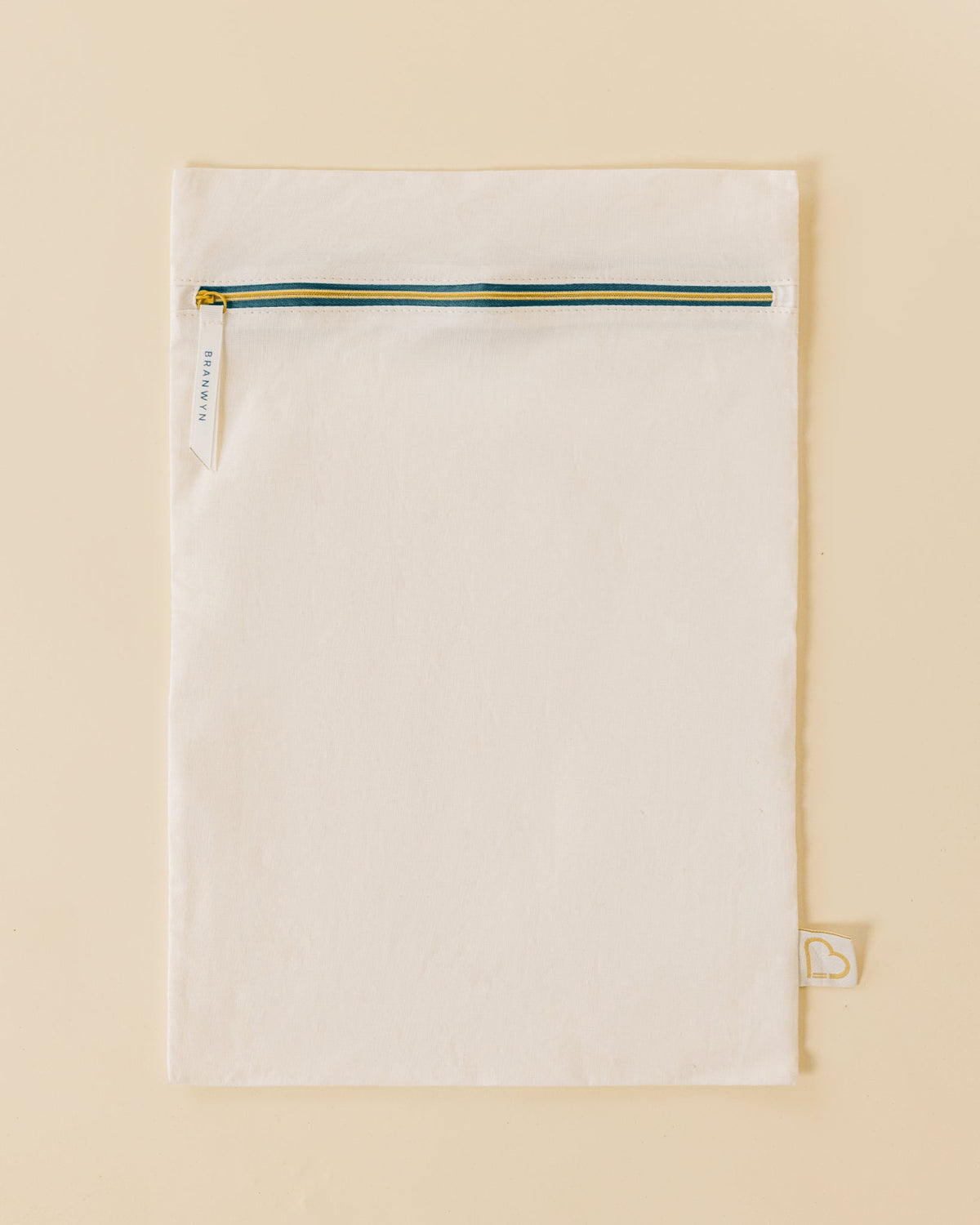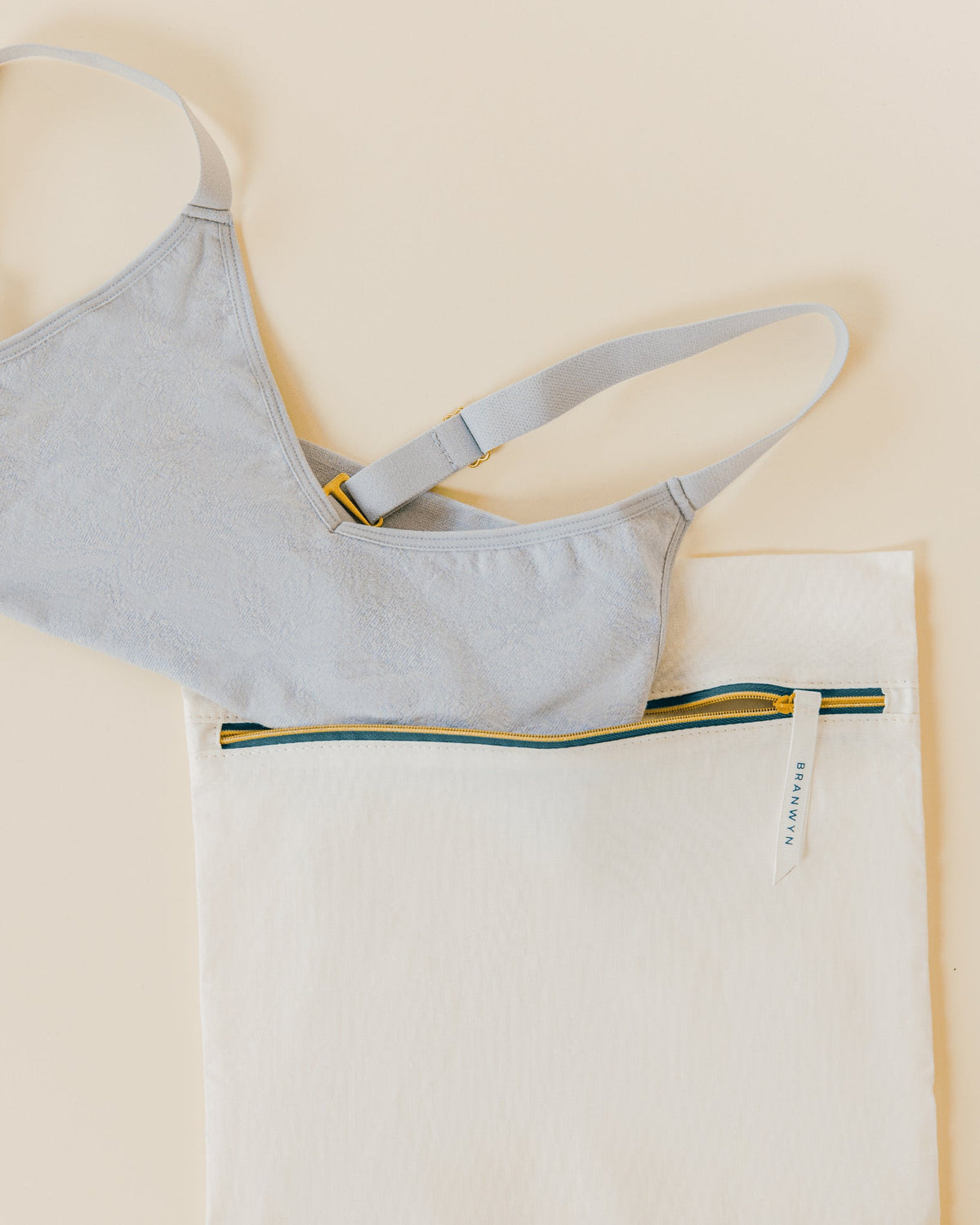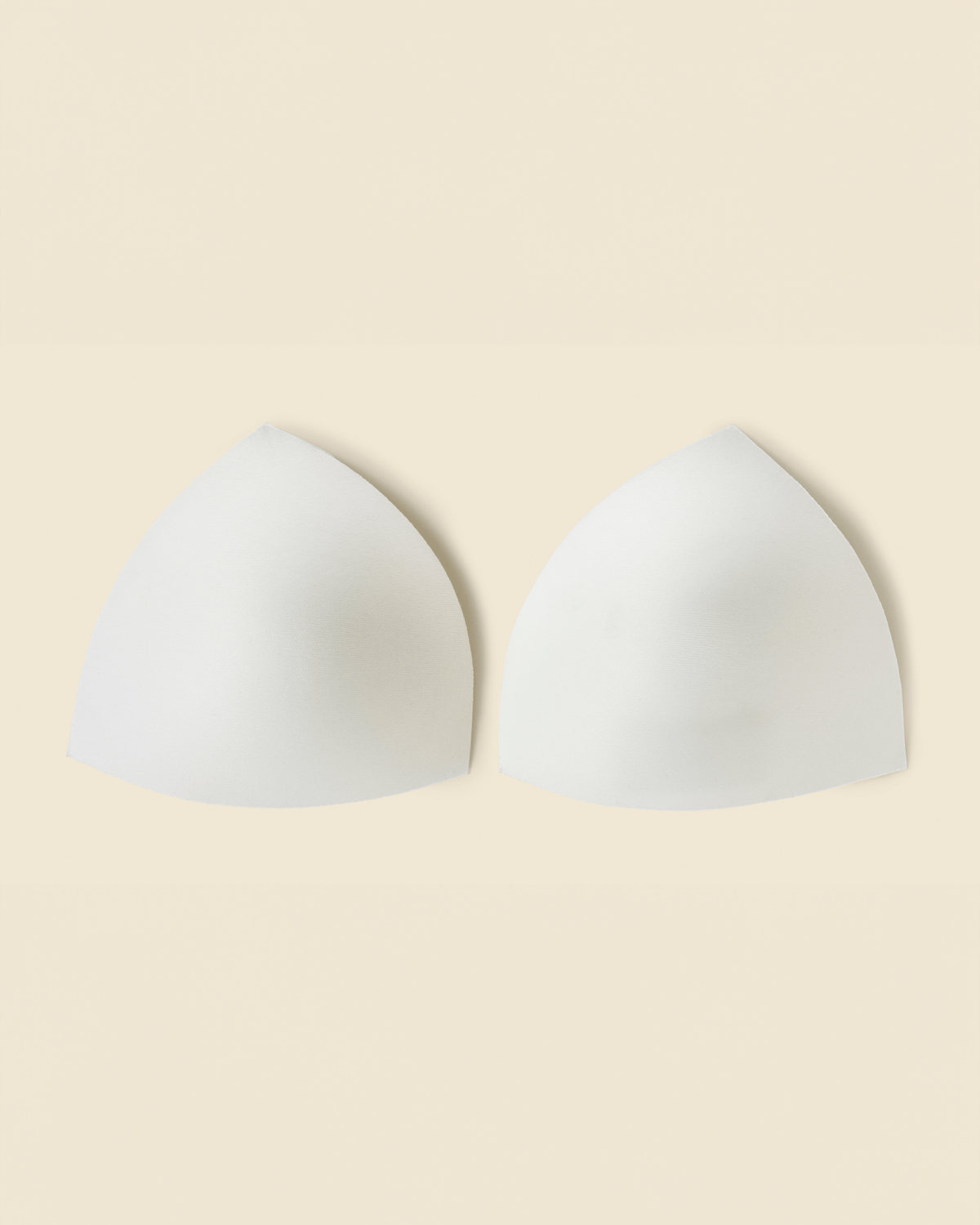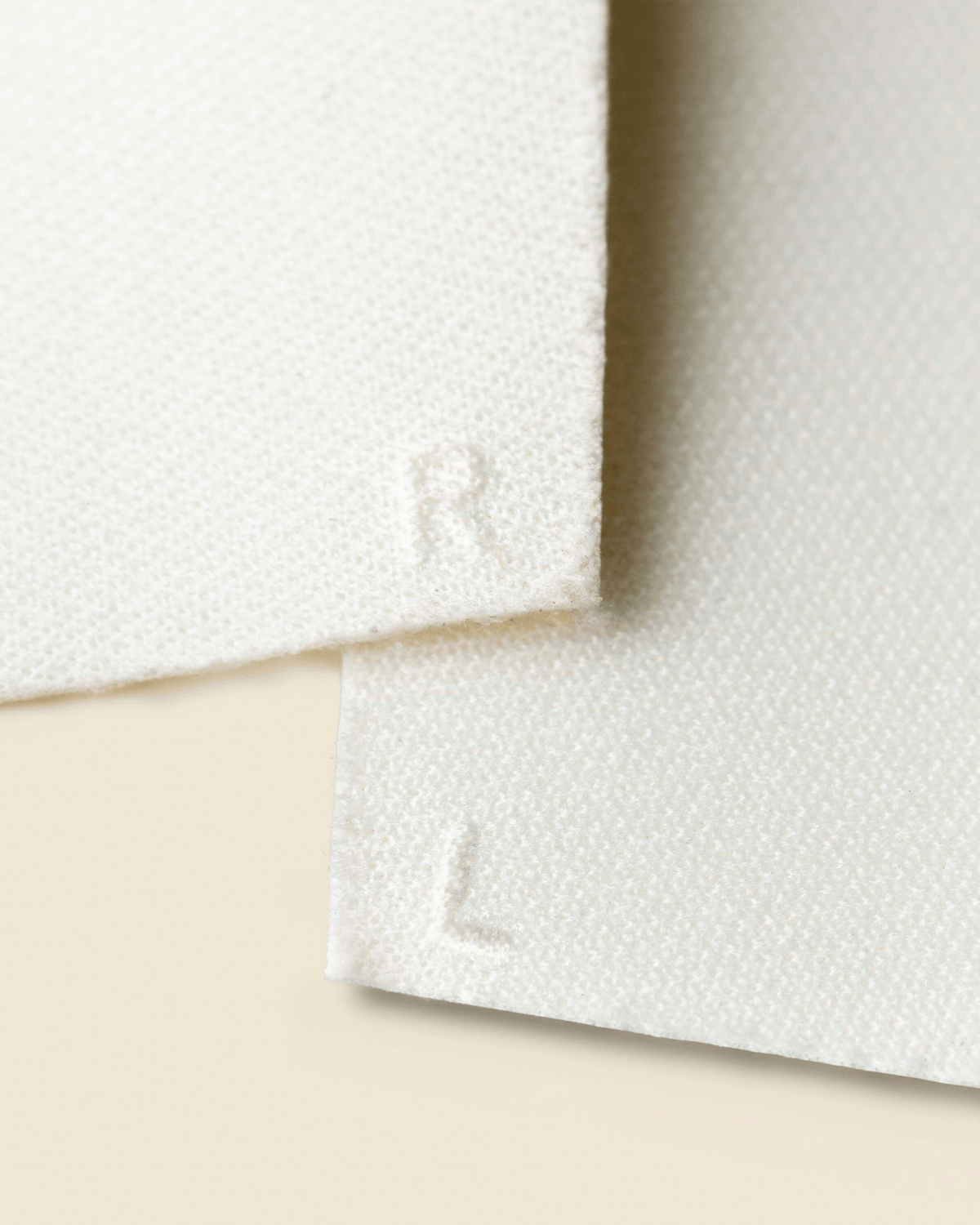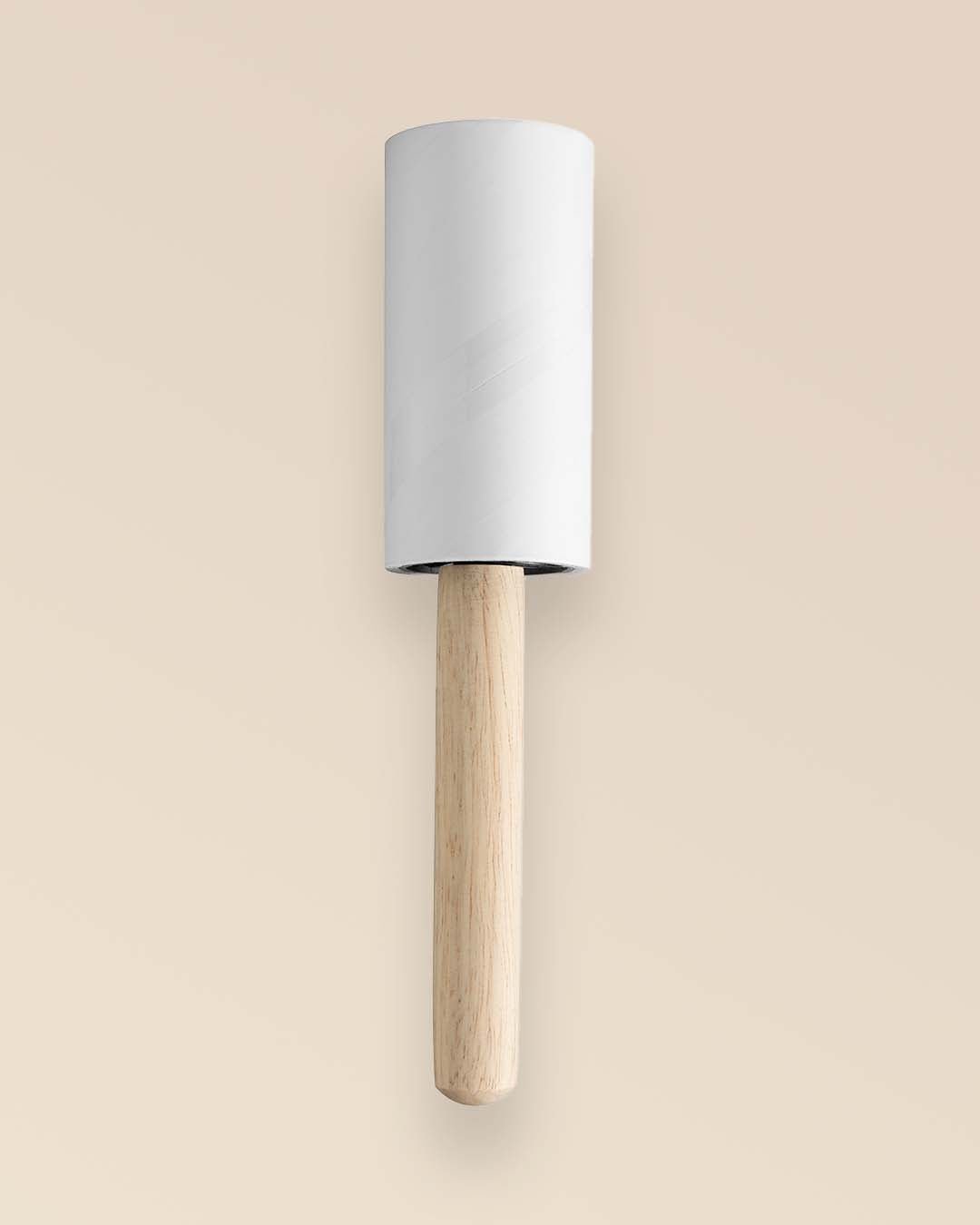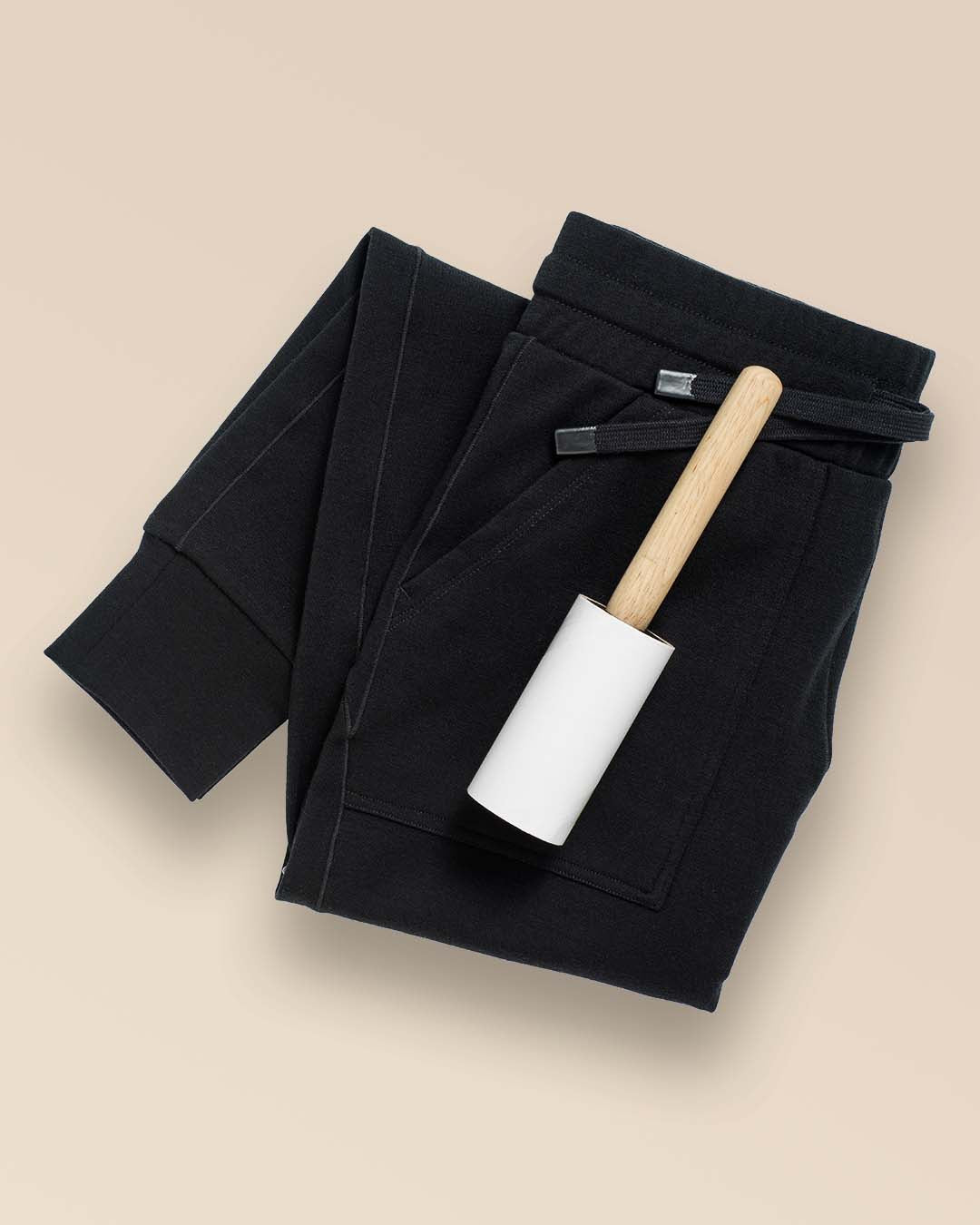They say there’s no such thing as poor conditions—only unsuitable clothes.
We’ve all been there. You forget to check the weather and leave your sunny driveway wearing a t-shirt… only to discover it’s 48 and drizzling at the trailhead. Or you realize a mile into your run that your bulky sweatshirt is way too hot, and you have to finish the workout a red-cheeked, sweaty mess.
The trick to staying comfortable no matter what the weather holds? Proper layering with appropriate clothing. Caroline Ross, an avid hiker based in Massachusetts recently completed the New England 4000 Footers Challenge. Also known as NE 67, the challenge is to bag 67 peaks across the area, all over 4,000 feet high—and the area’s notoriously fickle conditions add a dimension of difficulty. The old adage holds true: If you don’t like the weather in New England, wait a minute.

Caroline Ross (far right) enjoys the view from Maine's highest peak.
Ross says one of the keys to getting through the challenge was preparation and packing quality gear that can be scaled up or down as elements shift. “Anything can happen,” she says, remembering a New Hampshire hike where her crew lost the trail in a surprise October snowstorm. “Having extra layers could be critical not just for comfort, but for safety, too.”
Here’s how to layer like a pro so you can enjoy the great outdoors with confidence all year round.
Principles of Layering
When you consider an outfit for braving the elements, a few principles apply:
- Stay dry. No matter the temperature, keeping dry is critical. “Even when it’s freezing, if you’re doing a strenuous activity, you’re going to work up a sweat,” says Ross. “You want to make sure that you’re not retaining that moisture or it will make you even colder.” Merino wool is arguably the best fabric for keeping sweat away from the body—but more on that later.
- Stay safe. “You don’t want to get in a dangerous situation,” says Ross. “When it comes down to it, I’d rather have a slightly heavier pack and have the extra gear I might need in an emergency.”
- Keep it personalized. Follow the basic tenets of comfort and safety, but only you know what works best for you. Maybe you are a heavy sweater who would do better with a breathable windbreaker than a thick, insulating raincoat. Perhaps you have poor circulation and need heavy mittens. Make your outfit work for you.
- Consider the fit. Yes, you want to stay warm and dry—but also need to move without your outfit weighing you down. Make sure that the clothes fit well and won’t get in your way as you charge up a mountain or cycle down a gravel road.

5 Essential Layering Basics
Depending on the weather, you won’t always need multiple layers, of course. But when temperatures dip close to freezing—or you’re going to be outdoors for a number of hours—these are the elements that should be in your pack.
#1 Innerwear
Priority: overall comfort and performance
Yes, underwear is a solid starting point for most outfits. But when you’re braving the elements and planning on getting sweaty, what you choose to put closest to your body matters more than ever. Anything touching your skin will make or break how warm, dry, and comfortable you feel. If your bra or underwear is soaked in sweat, it barely matters what you wear on top, you’ll stay chilled to the bone regardless.

Innerwear from BRANWYN is made from sustainable Merino wool—the very best fiber to stay close to your skin as you sweat. That’s because Merino fibers hold up to 30% of their weight in moisture without feeling wet (most fabric can hold only 5%), while simultaneously wicking away moisture from the body. The fiber also naturally banishes odor (ideal for long or multi-day adventures) and helps regulate your temperature. Merino sheep live in climates that dip down into the single digits and soar into 90+ degrees. Their wool has natural crimps that act as insulation, stabilizing your baseline body temperature so you don’t get too hot when it’s hot or too cold when it’s cold. Our recommendation? Start with a bra that moves with you on top and your preferred cut on the bottom.
#2 Base layer
Priority: breathability
For your baselayer, think relatively lightweight and fitted to your body. Merino wool is also a great choice here as it helps remove moisture, wicking away heat-robbing sweat to keep you comfortable. Ross says that you can choose the warmth of your base layer depending on the weather for your adventure. Her one no-go? Cotton. “I’ve made that mistake—it’s just terrible.”

#3 Mid layer
Priority: warmth
This is where things get toasty. Your mid-layer provides the insulation that will keep you warm, especially as the temperatures dip lower and lower. Keep in mind, the more efficiently this layer traps heat, the warmer you’ll be. Mid-layers can be as light as a thin half-zip or as heavy as a thick puffy jacket. Depending on the weather, it might be both.
#4 Outer layer
Priority: protection
Think of your outer layer as a shield against the elements. This is the layer that will protect from wind, rain, snow, and sleet. Look for shells that allow perspiration to escape while keeping precipitation out. If you’re carrying a pack, it’s a good idea to bring a shell even if the weather is currently calm. “Even on sunny days, a rain jacket is in my backpack at all times,” Ross says.

#5 Accessories
Priority: coverage and safety
Consider whether you need any more coverage—and if there’s anything else you might need for safety. Ross says in the colder months, she brings a hat and neck cover to keep that sensitive skin warm, as well as an extra pair of hiking socks in case of an unexpected puddle or hot spot. She also carries a pair of microspikes to navigate any ice closer to the summit.
When it comes to layering, it’s not just about being prepared, you want to enjoy the journey, too. “You want to be able to eat your peanut butter sandwich at the top and enjoy it!” says Ross.

